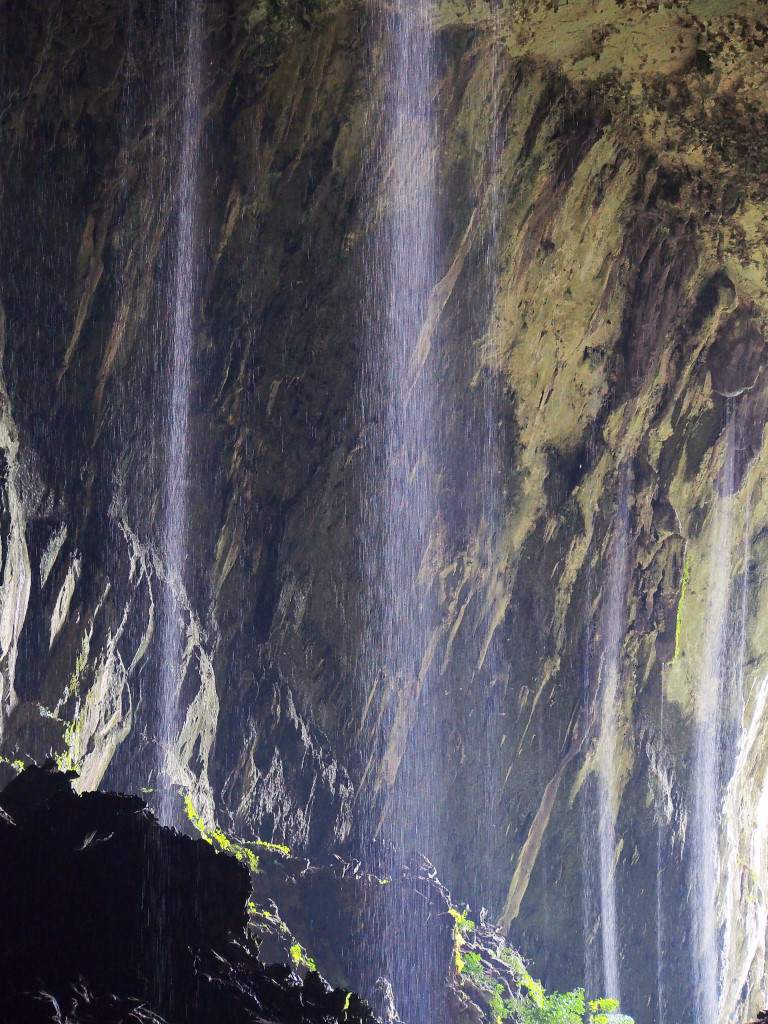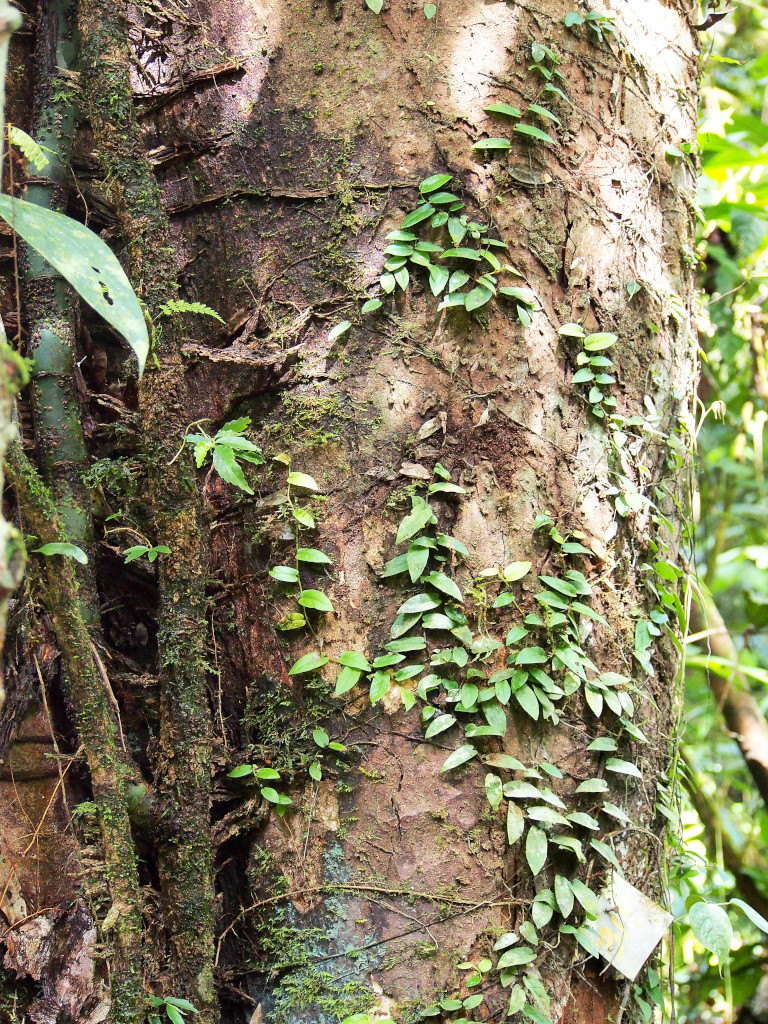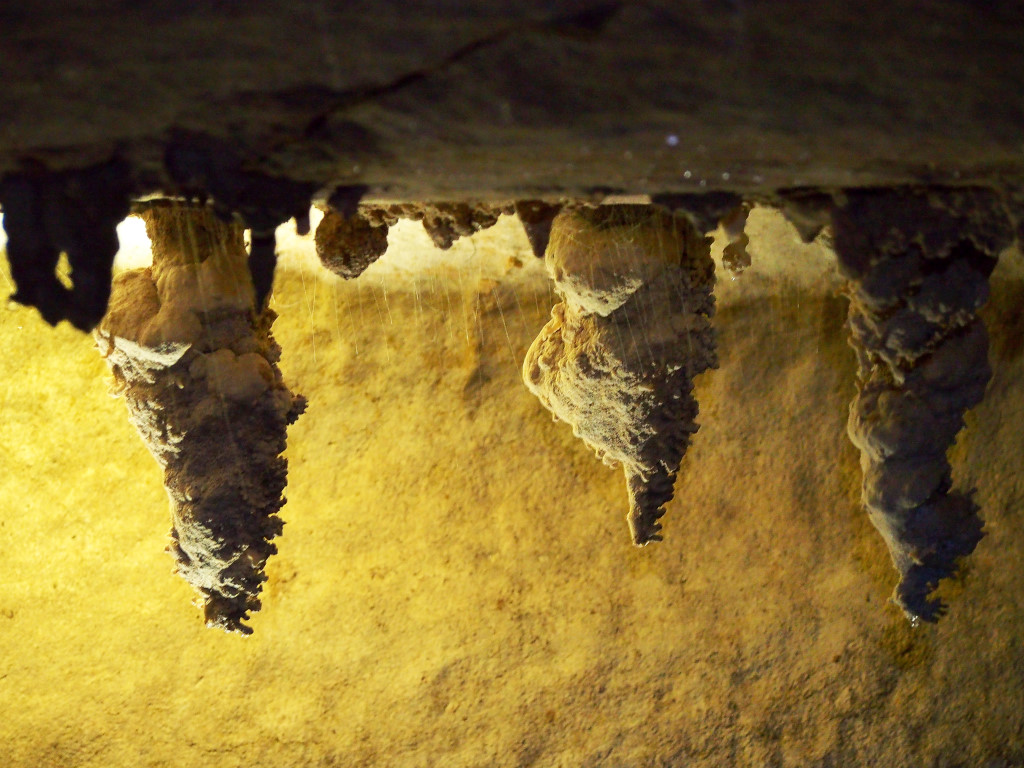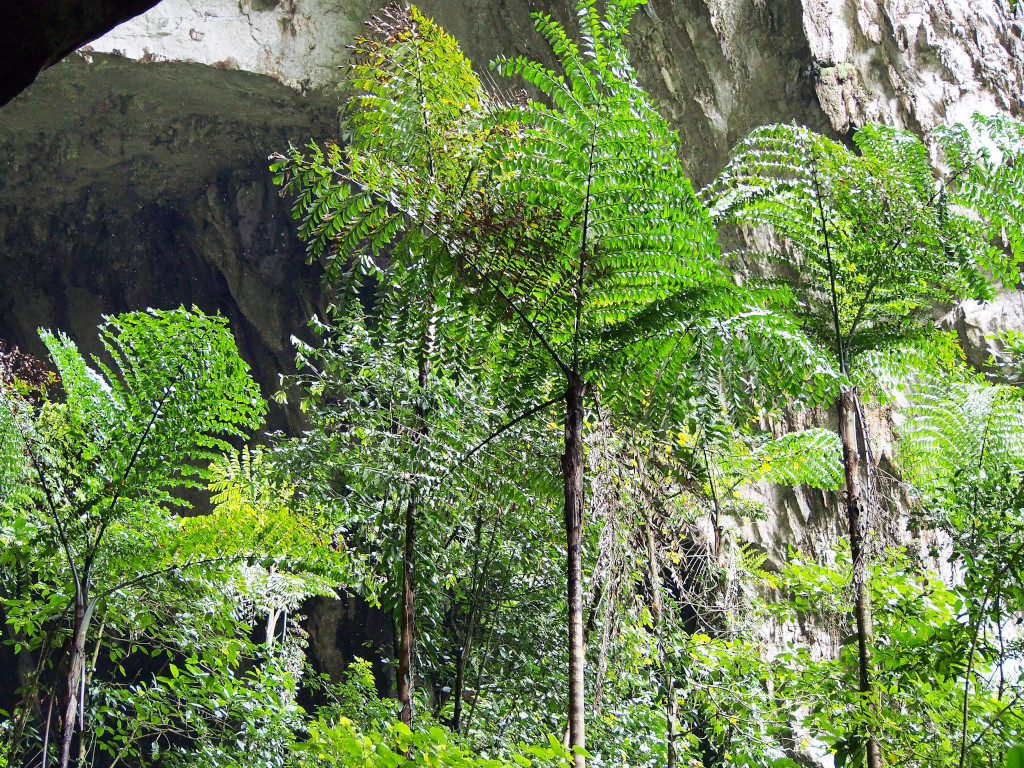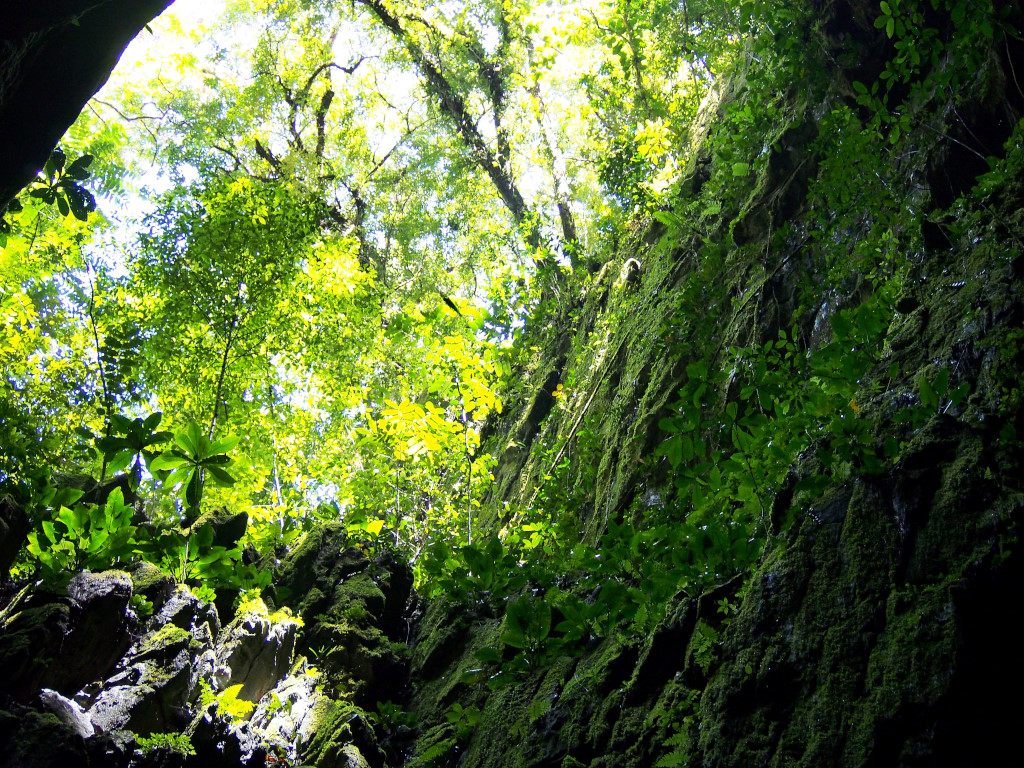May 4th, 2015
I toss and turn as dawn emerges, the leaden overcast sky peering through the tatty curtains, giving little idea of the time of morning it may be. There is no electricity, I have no watch or cell phone, the computer battery has been completely drained, and the time on my camera has for some reason been reset.
I scramble around the room, quickly packing my belongings, occasionally checking in the hallway and peering over the balcony outside, but not a living soul is in evidence. There is also no sign of the woman from Kuala Lumpur I came here with yesterday afternoon.
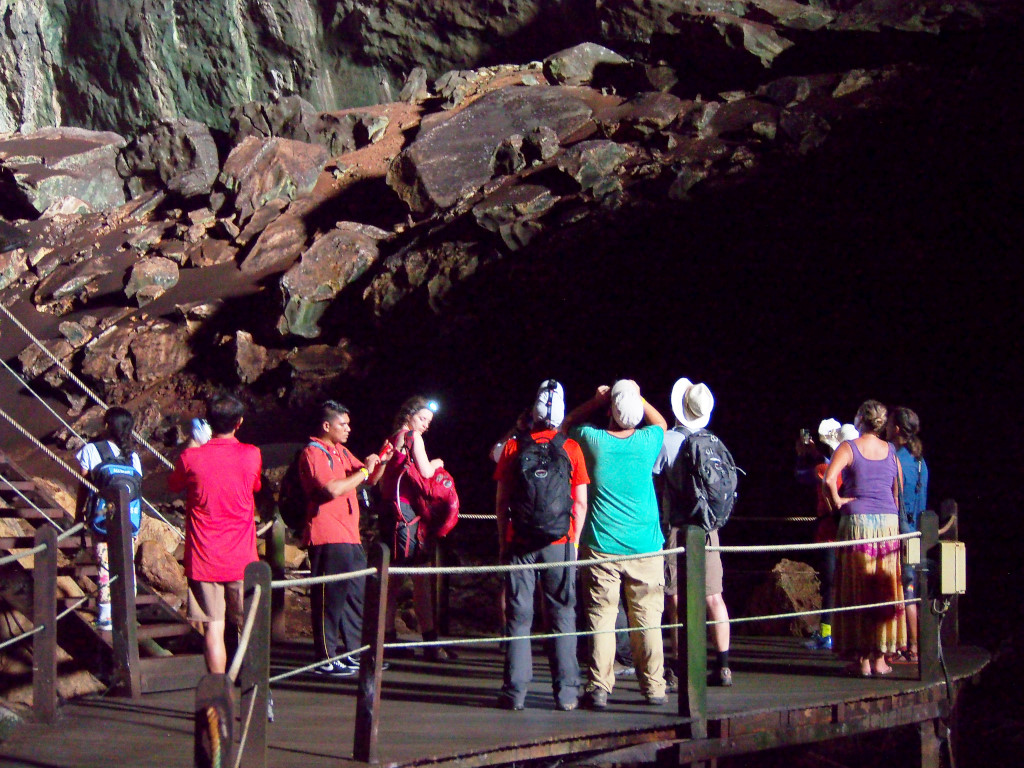
I am set on leaving and finding something better, and yet I have no idea as to who to even pay. No matter – if the owners put so little effort in the place, I can just leave a 20 RM note on the table, throw my packs on my back, and tromp through the pouring rain to the park office.

Once my 9:15 am hike has finished, I will hopefully be able to find some decent accommodation in the vicinity of the park access bridge, but right now I just need to leave my belongings somewhere. The park has a left luggage room, but with no security – which leaves me to find a secure place for the tote bag with my camera and laptop.
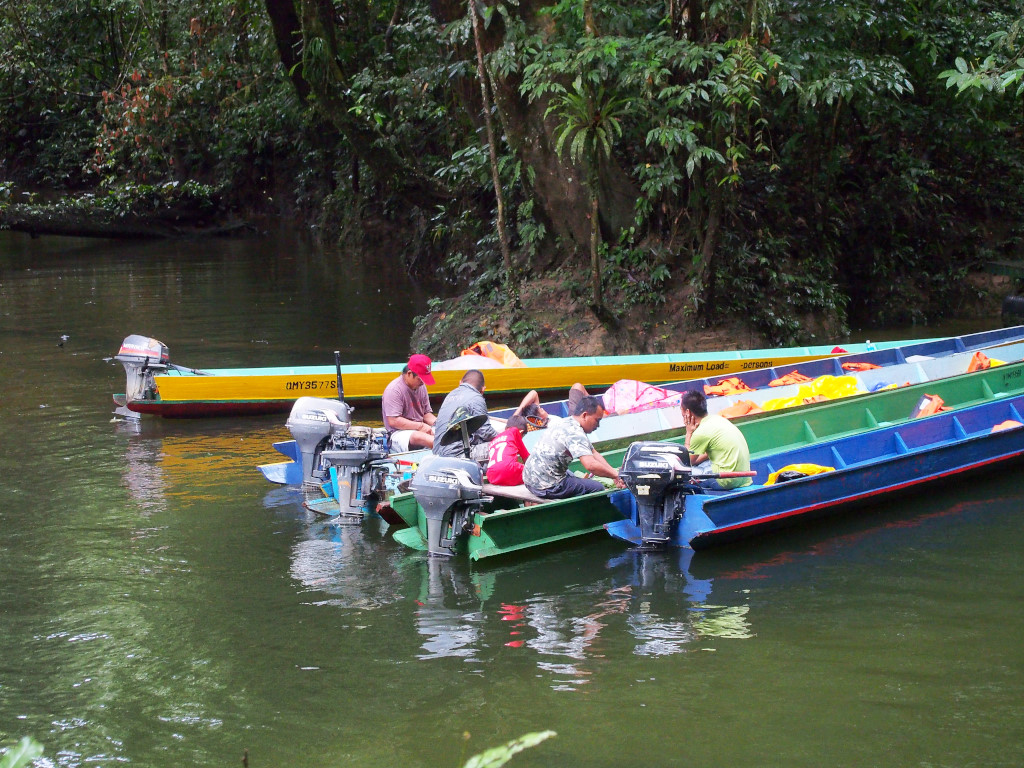
My temperature rises in the park headquarters office when I am told I can’t leave my bag with them – not even for a few hours while I am on a hike? Are they really that anal? Can’t they just leave my bag in Alison’s office – I am sure she wouldn’t mind. They relent, given that I seem to know who she is, although my presumptuousness comes back to haunt me later on.

It turns out that the woman who took me to the ramshackle hostel is on the hike to the Clearwater cave as is Frank, the boat trip and walk through the cave system later provoking an organic flow of snide remarks between the two of us. As luck has it, the rains slowly dissipate and eventually end altogether as we climb into the narrow longboats in groups of 4, donning life jackets, and then motoring off into the rapids.
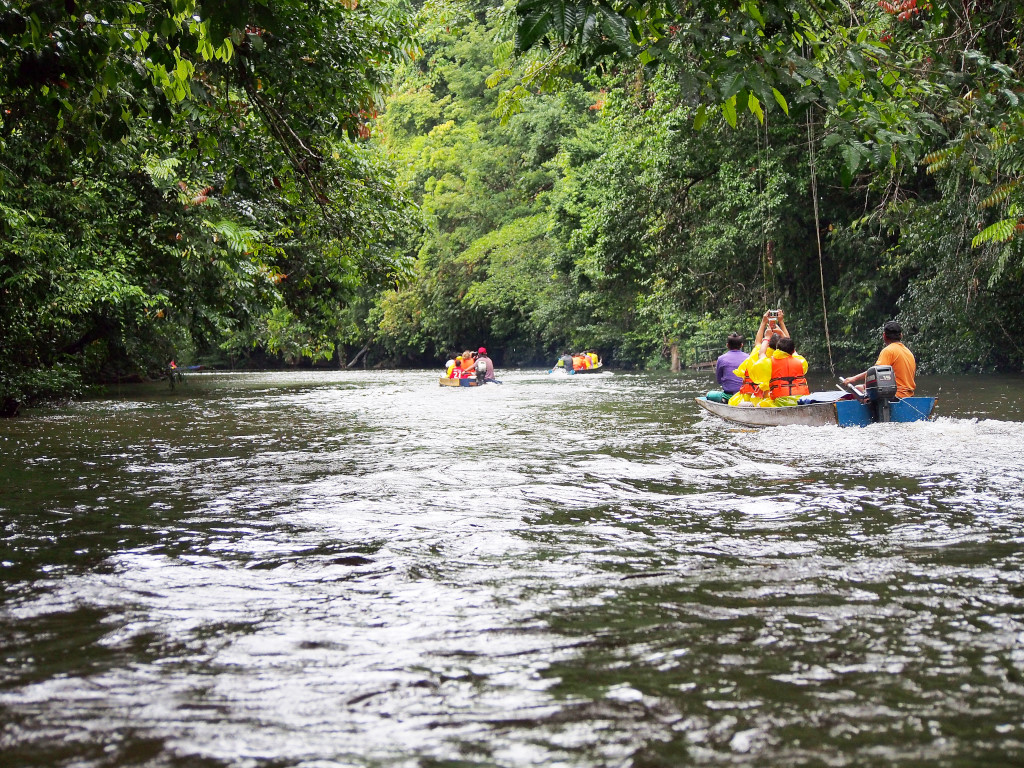
As the rain clears, the enormous billowing cumulus clouds rise up against the patches of brilliant blue, thick tufts of cotton embedded in the seething green around us, the heavy water-soaked foliage leaning menacingly over the winding channels.
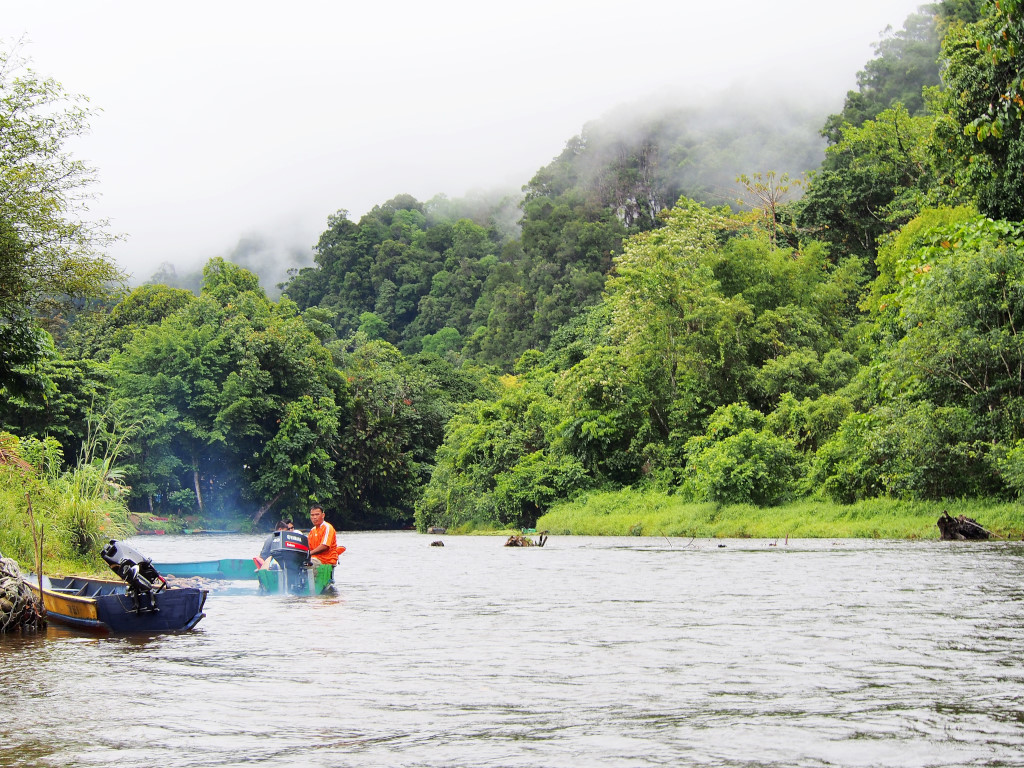
We are initially ferried in a procession of longboats along the river running along Mulu park, weaving along the narrow river toward an encampment that is used as staging ground for the Clearwater cave trek. The settlement consists of a few rudimentary wooden longhouses raised from the ground. The setting would be utterly magical if it weren’t for the fact that isolation and underdevelopment conspire to make life anything but romantic for these people.
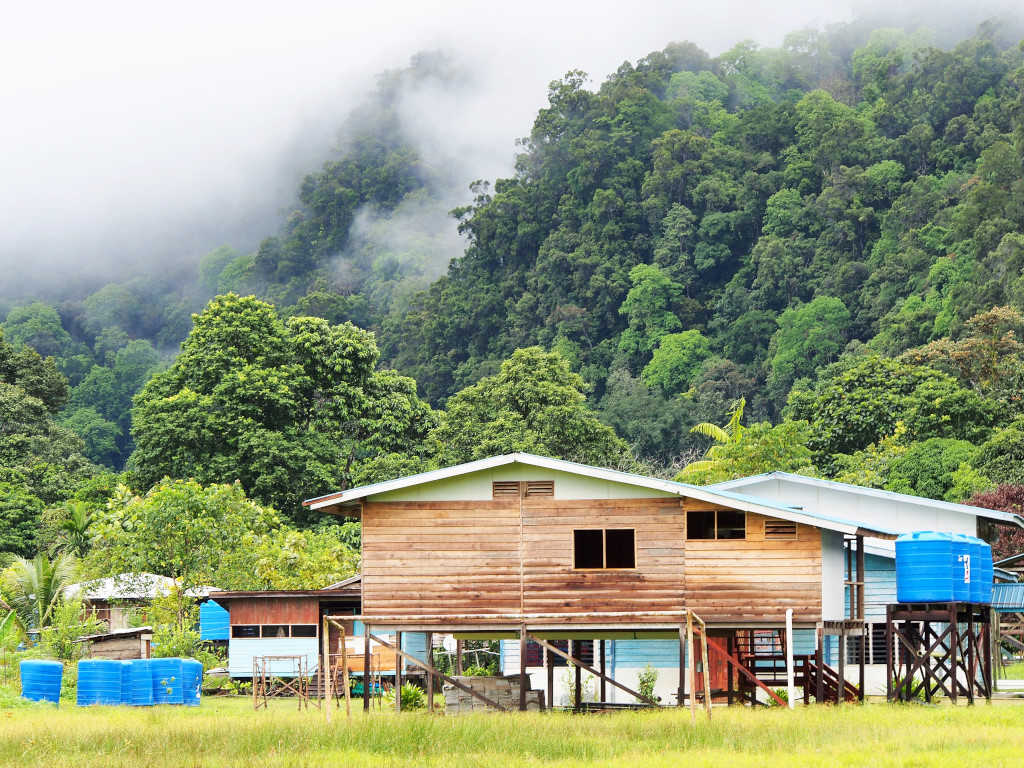
Steep hills laden with tropical foliage and enshrouded in thick mist soar above the shacks. Even at this time of morning, the air is damp and warm, but not uncomfortably so. A long, canopied shelter houses two long rows of tables where local women of various ages are perched before a variety of typical Sarawakian indigenous crafts, more of the same kinds of items I had seen in the Sarawak Handicraft Centre in Miri, although with much higher prices.

We continue by boat along the dramatic river, the verdant jungle rising high above us, into the low-hanging clouds. The vegetation around the river is lush, with thick pillows of cotton billowing over the landscape. Despite the airborne moisture and the threat of imminent downpour, we are spared the rain on our short journey toward the caves.
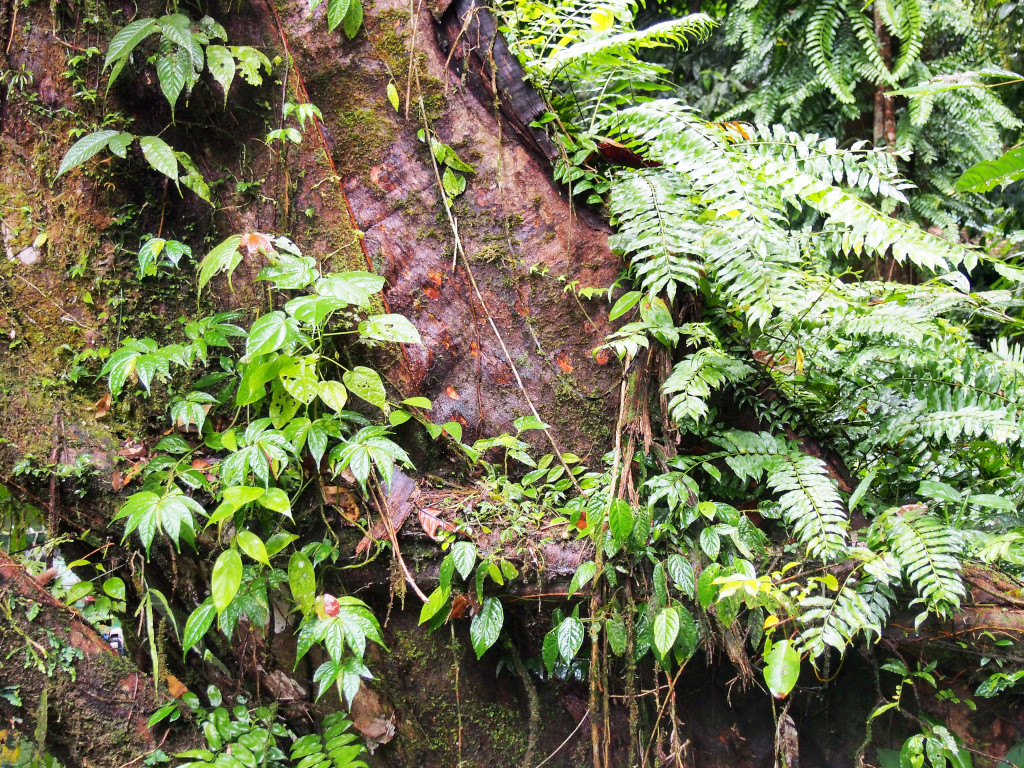
Heavy trees laden with foliage lean into the narrow gushing torrent, vines and creepers cascading from the branches of the trees. Given how close to the banks and towering trees we are, I wonder what the possibility would be of some unwelcome creature dropping onto us.
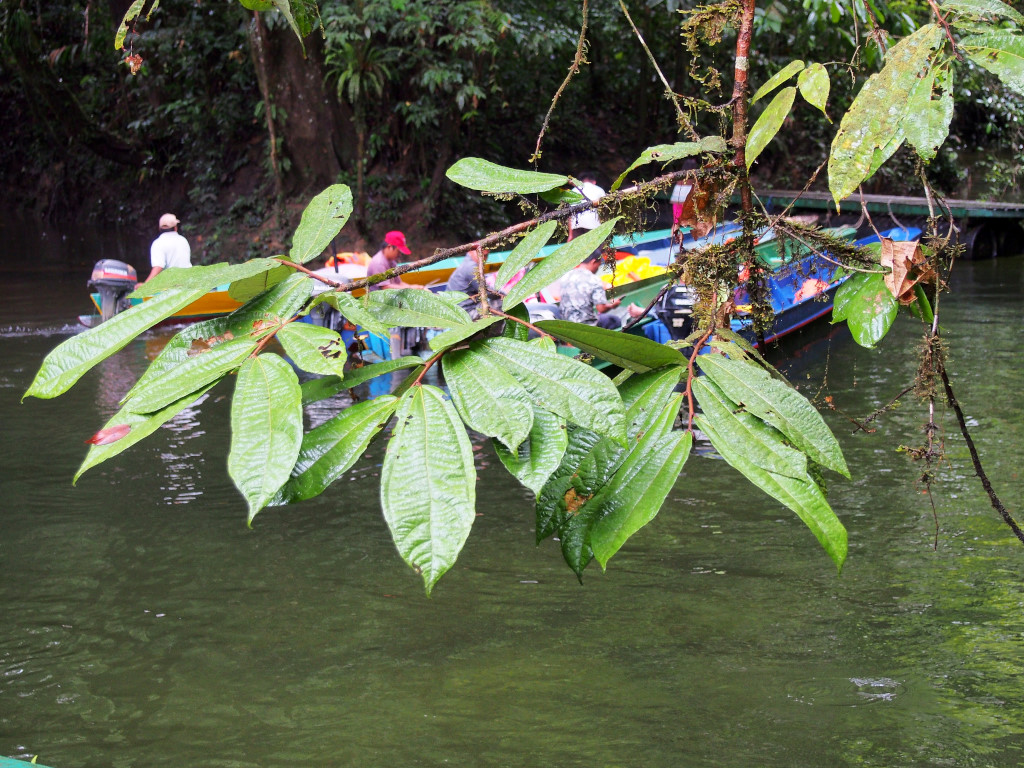
Even though the boat journey is incidental to the visit to the caves, the brief river-born journey is utterly fantastical. As is typical of tropical jungle, virtually nothing but green is visible. In this morass of green and virtually constant equatorial downpour, flowers of any sort or calibre are barely visible.
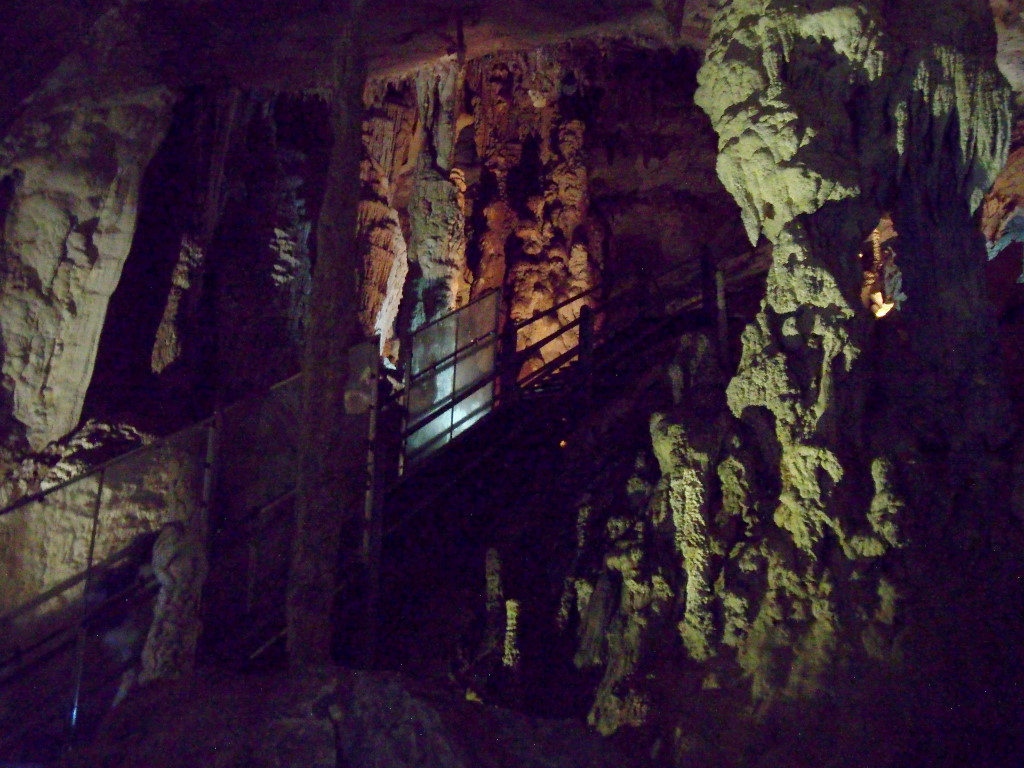
We disembark at the narrow jetty, and following a brief climb, find ourselves in the cave system. We begin in the Wind cave, a smaller cave with back lighting that illuminates the fantastical interior in the most mysterious manner. In the play of light and dark, the farther reaches of the potentially vast spaces are briefly exposed to the torch light, then disappear again into the inky darkness.
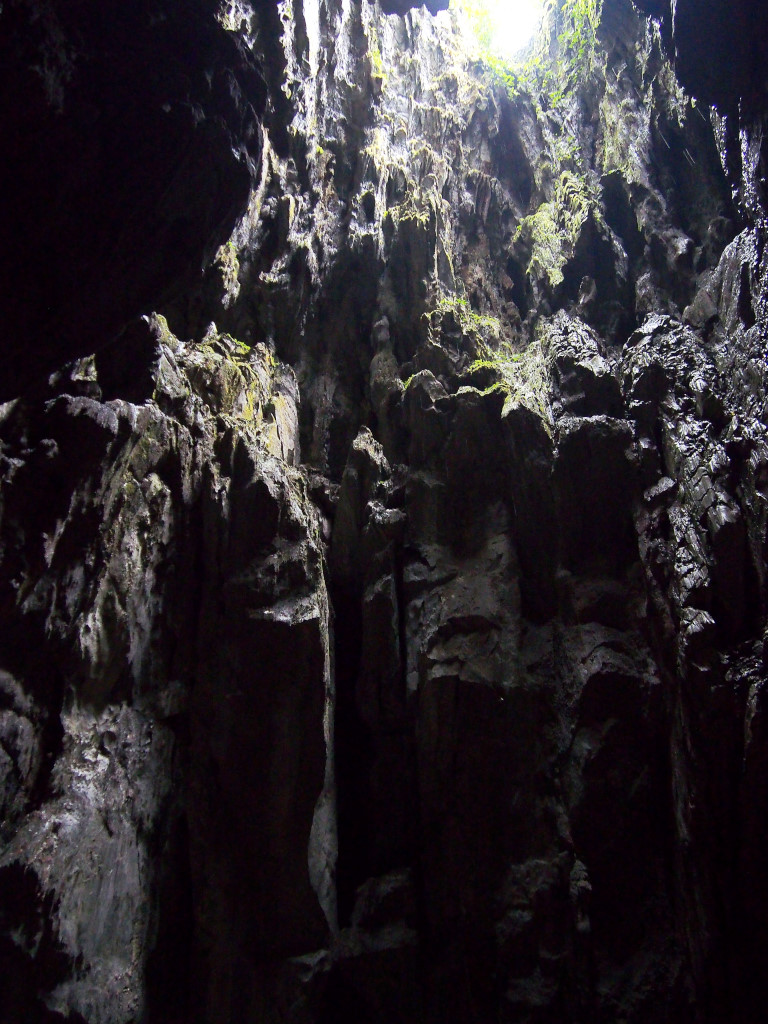
Beyond the clusters of stalactites and stalagmites, there are other rock formations. In some cases, the stalactites have not just joined the stalagmites, but formed lurid, malformed pillars that appear to be melting. Grotesque orbs of matter emerge layer in a writhing mass of serpentine stone, akin to the exaggerated surface of a brain.
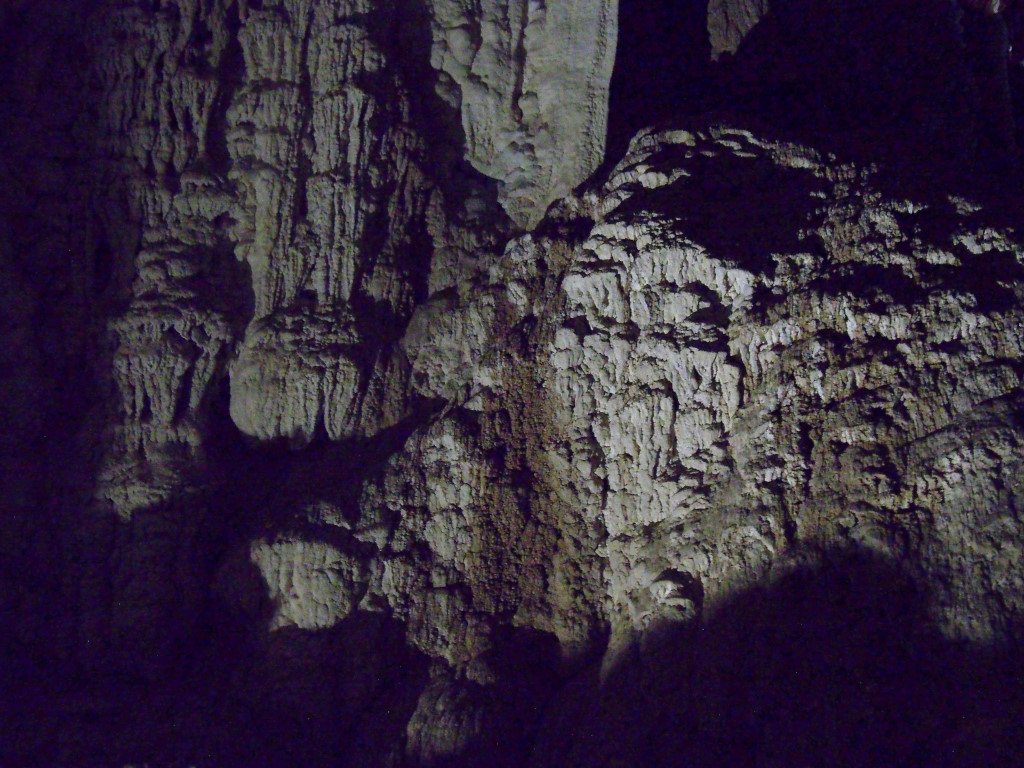
The caves were formed by slightly acidic water seeping into and eroding limestone-bearing rock. The caverns were gradually emptied as the water table was lowered. Stalactites and stalagmites were formed by rainwater dripping through exposed caverns over time. The slow erosion of the caverns has resulted in the most fantastical formations. We are given some basic explanations by our guide as to the geology of the caves we are in, but we are largely just in awe of our surroundings.

As surreal as the formations around us are, as difficult it is to take any kind of meaningful photos, given how dark it is. Then the dark grainy photos don’t begin to do justice to the exotic formations we traverse.
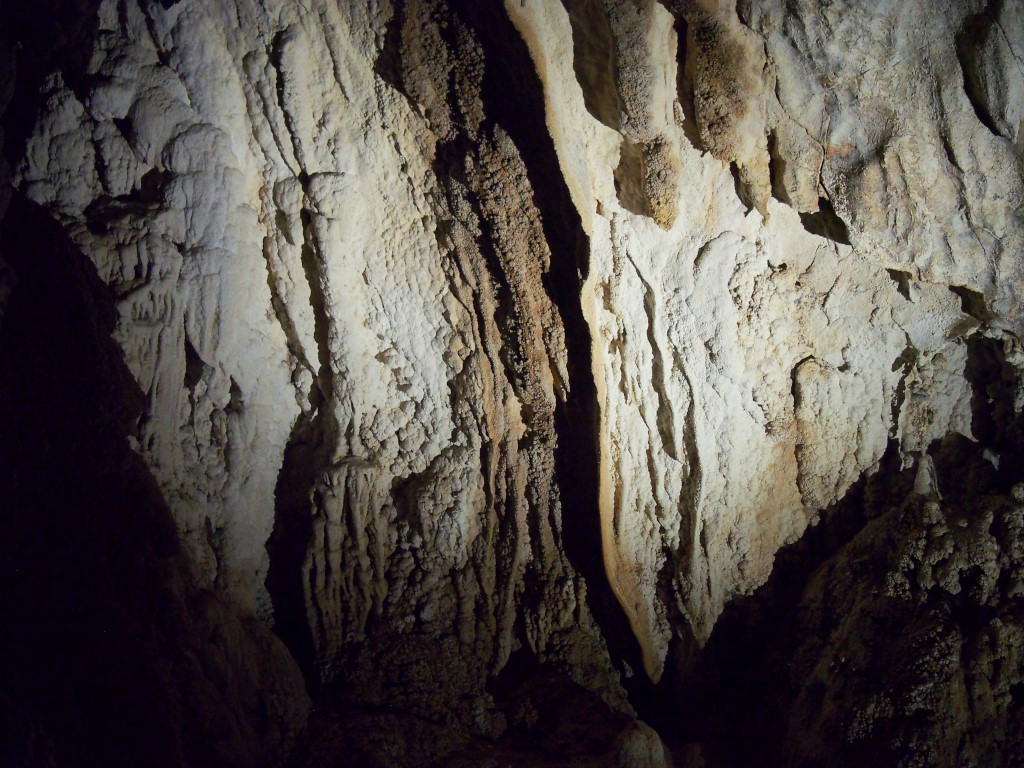
There is also unique flora and fauna that lives exclusively in the cave systems. While the spectacular caves here are also found in other locations in Sarawak, if not all of Borneo, the caves in Gunung Mulu National Park are probably the most ostentatious.
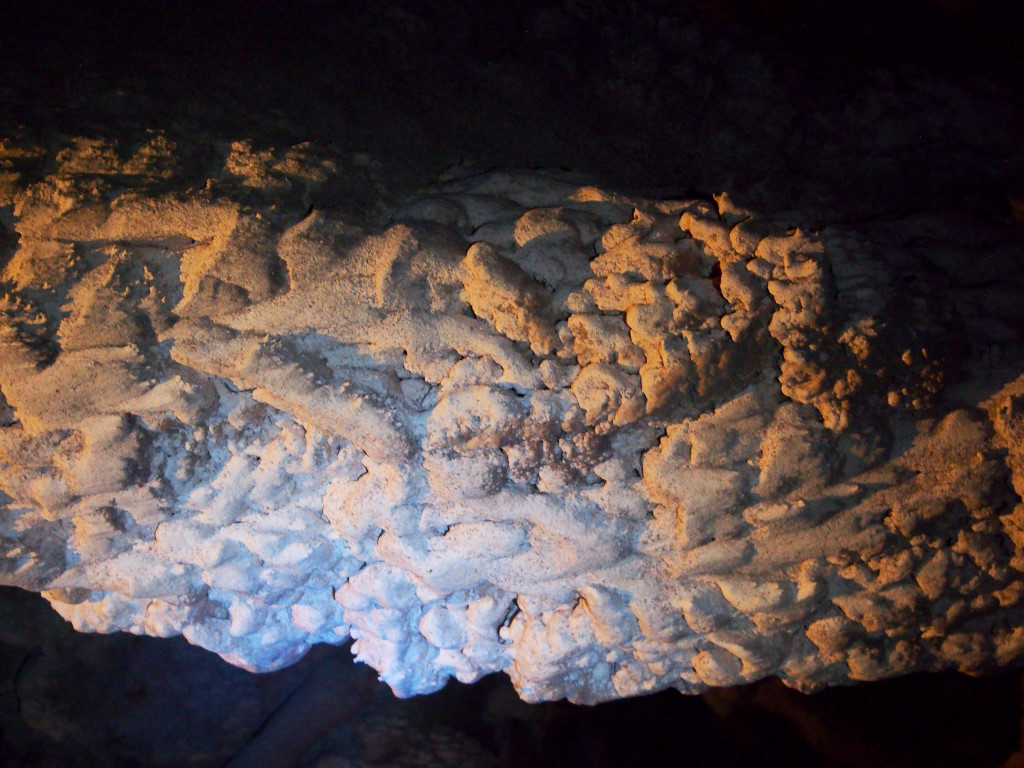
We proceed onto the next cave, the Clearwater cave, apparently Asia’s longest cave, measuring some 107 km. That number simply defies comprehension, and suffice it to say we proceed no more than several hundred metres inside the contorted limestone intestines …

Even from a retail perspective, without any hint of serious spelunking, traversing these relatively accessible caves is an adventure, given the darkness, the fantastical interior topography, the utter lack of linear space to facilitate a sense of direction and position, steep winding passages and staircases, the presence of trickling or gushing water, rendering the passages slippery.
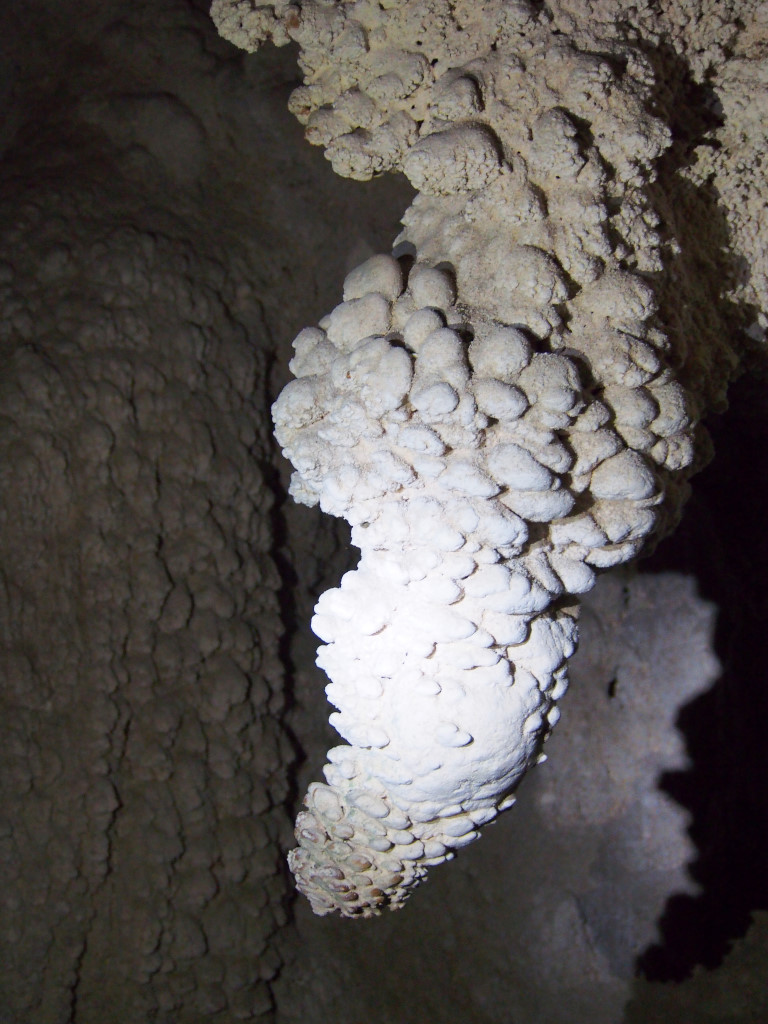
The treks we on are only introductory treks – there are actually serious technical caving expeditions that the park offers. The idea of crawling through narrow spaces in this turgid darkness in protective clothing, risking slipping and falling in the darkness to one’s demise, or encountering some poisonous snake or spider at very close quarters, all the while drenched in sweat, is not an experience I wish to ponder.
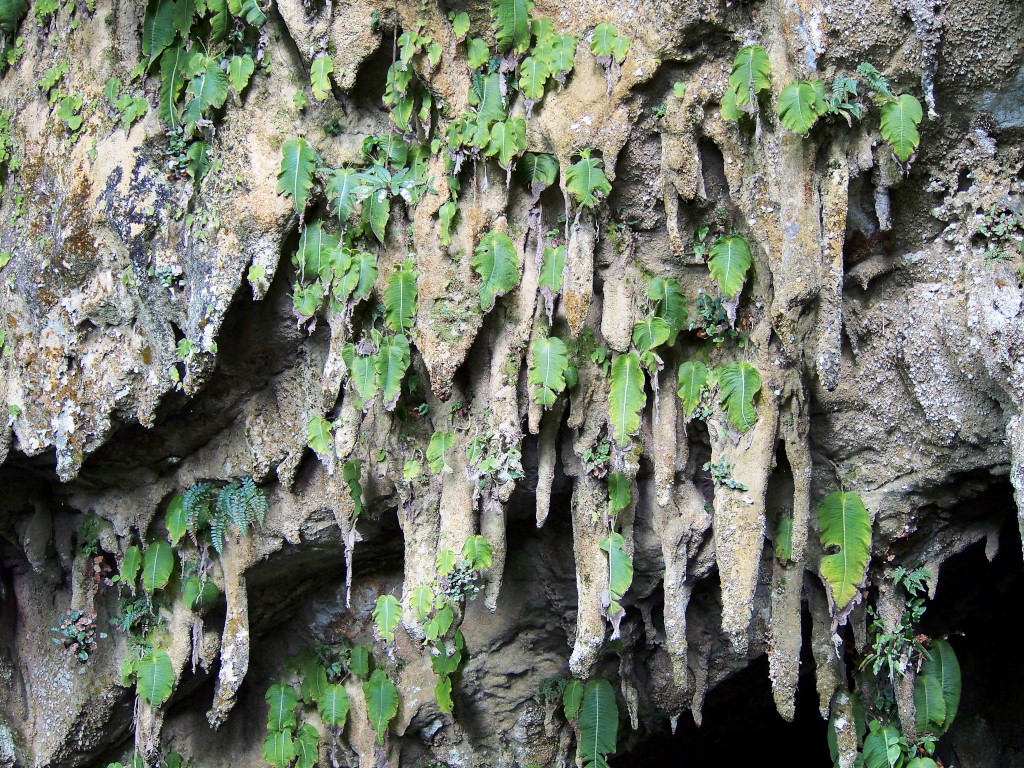
The stone formations visible vary wildly in shape, size, positioning, be they stalactites, stalagmites, or bulbous formations vaguely reminiscent of the bubbling surface of an unholy concoction, suspended immediately above us or in other cases visible far above in the diminishing rays of the few torches we carry. Forms erupt from spaces around us, voluptuous, garish, leering, beckoning, and leprous, some surfaces appearing to be flowing off the sides like melting cheese in corrugated rivulets.
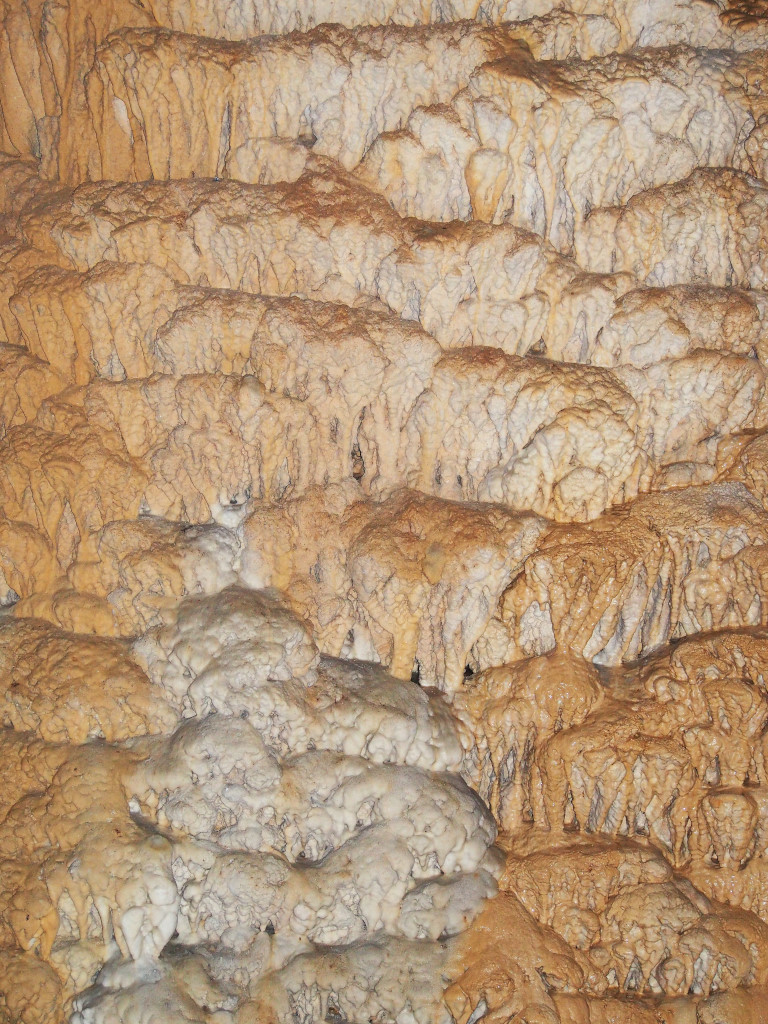
Irregular cavities open up into vast, improbable caverns, the emptiness again threating to vanish entirely in the darkness, either culminating in a rock face or a threatening abyss. Casual meandering would not be an expression for the kind of exploration a visitor would engage in here.
This is the earth at its most organic, raw, unconstrained and yet also merciless.
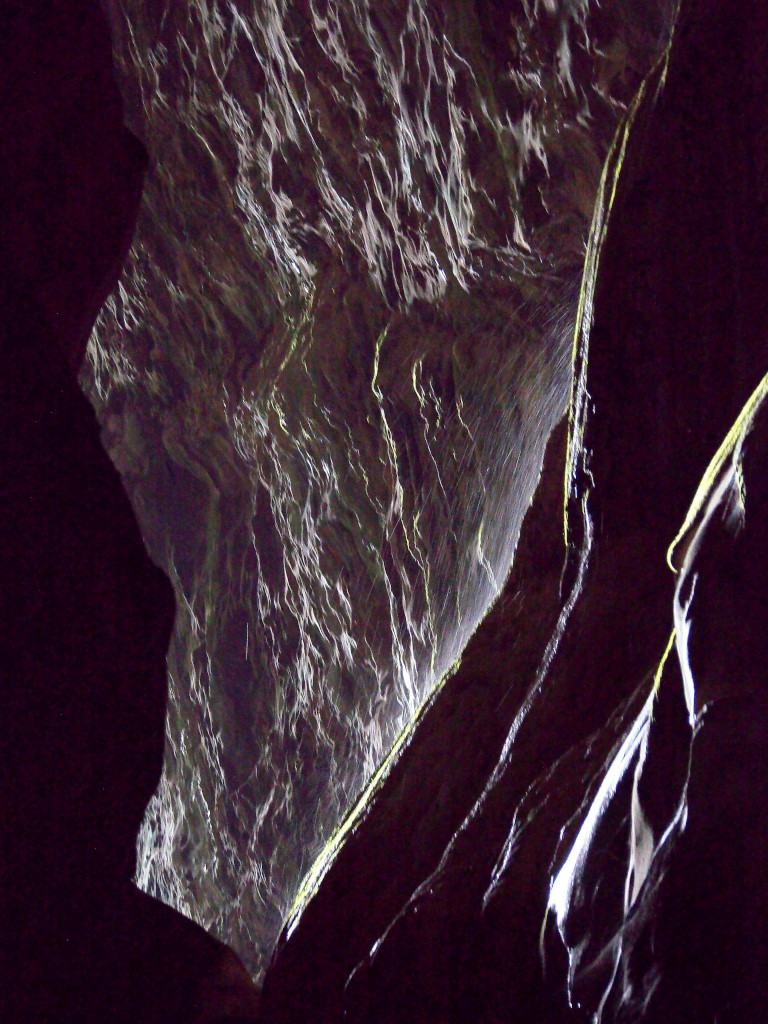
The experience we make is directly proportional to the power of the torches we carry. Given that the members of the tour carry relatively weak lamps while the guide carries a high-powered torch, we are entirely reliant on him to guide the way, to illuminate the surreal spectacle around us that is only vaguely visible to us.
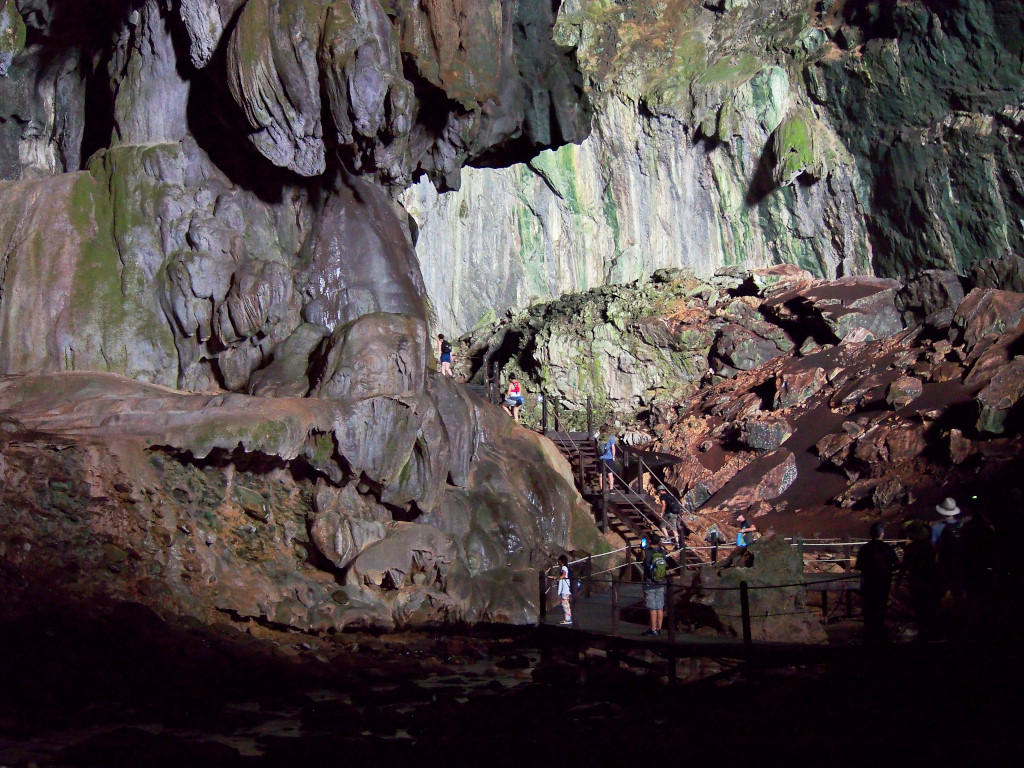
The interior of the caves may be cooler than the outside, but the air much heavier and the humidity nonetheless very intense. Even though this is not the prime cave to see bats, hidden in occasional crevices are bats, huddled against the rock, or flying at improbable speeds through the dark caves.
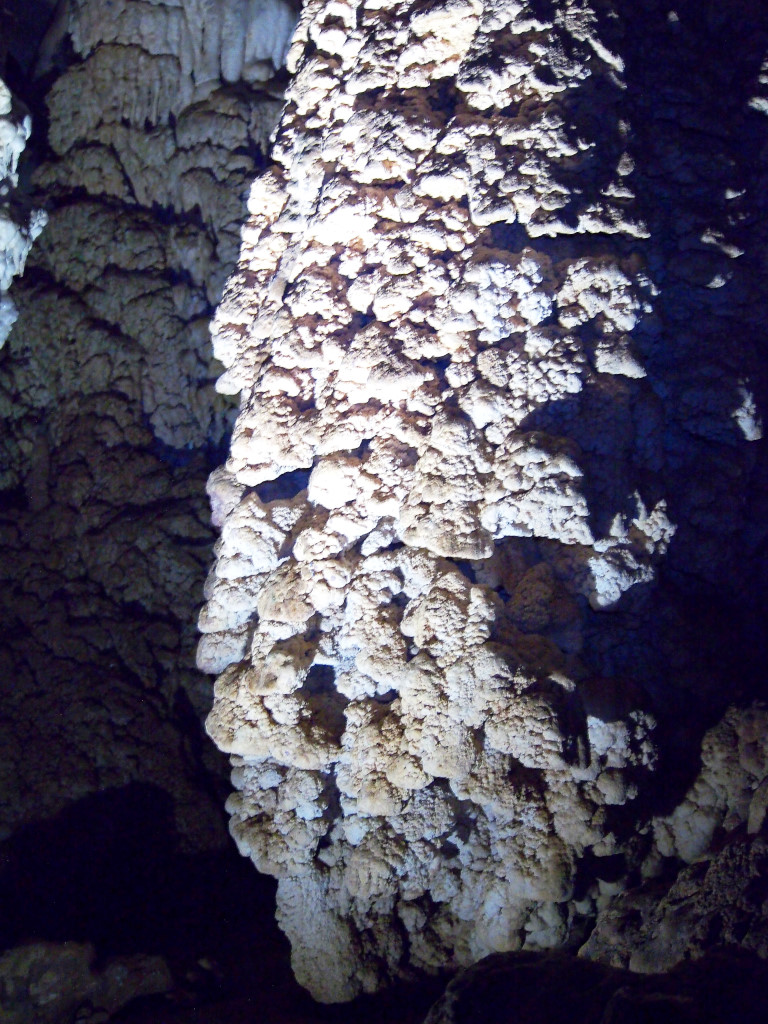
In the occasional flashes of light, grotesque, oversized insects clamber clumsily around the boardwalk and vanish again into the darkness. There is at least one species of snake endemic to the caves, and there may be spiders also, keeping the visitor very much on the edge at the idea of risking running into something very scary at the wrong moment, which is pretty much all the time.

If I remember correctly, there are also swifts that live in the darkened caves, but they may not actually be resident in the darkness.
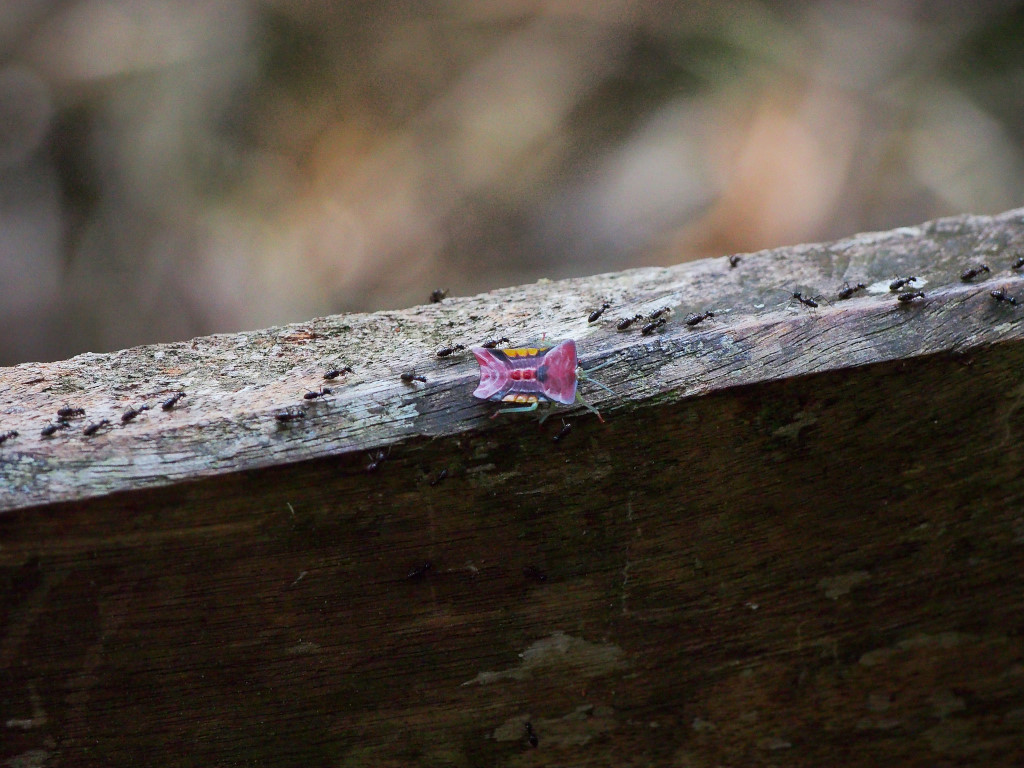
Climbing upwards to the end of the Clearwater cave, one staircase followed by another, the light of the opening appearing remote and distant above our group, then brighter, clearer, the greens coming into focus as the terrestrial world reappears in its glory.
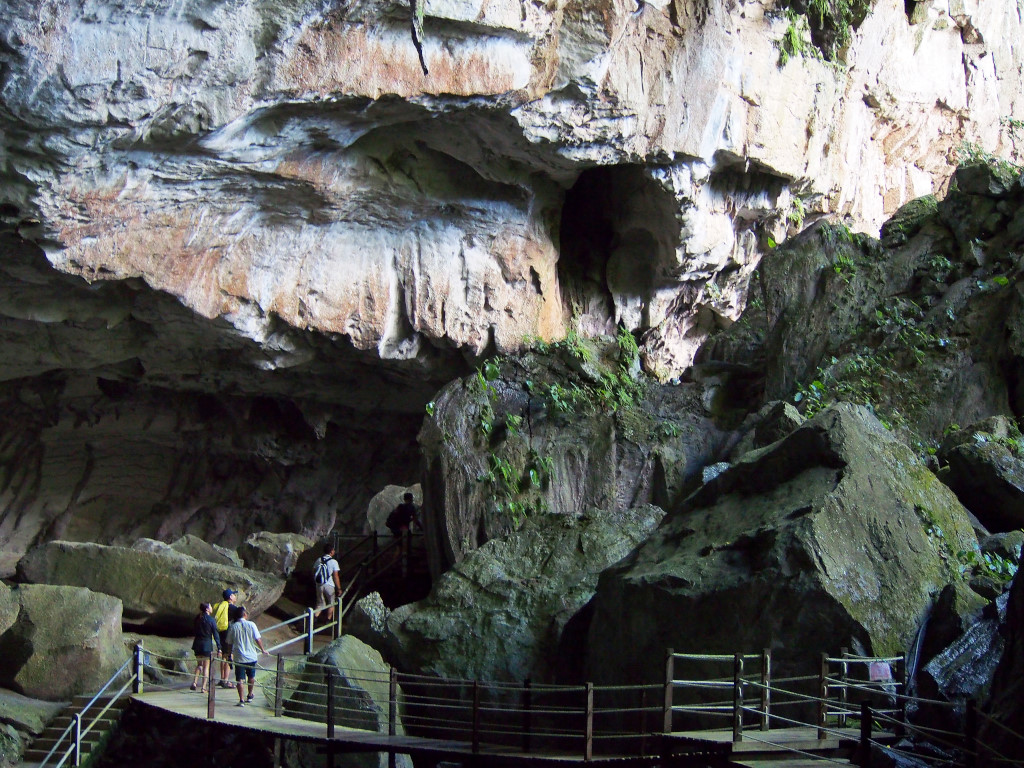
Back in the world of the living, every surface is crawling with vegetation and overgrown with vines. On the trail leaving the Clearwater cave, we see clusters of spectacular butterflies on the boardwalk, their sail-like wings flecked with an emerald incisor pattern, crowning their ruby-red bodies. The butterflies scurry, then land, flutter off again, then land on the surface, fluttering wildly, or on the other hand remain entirely still.
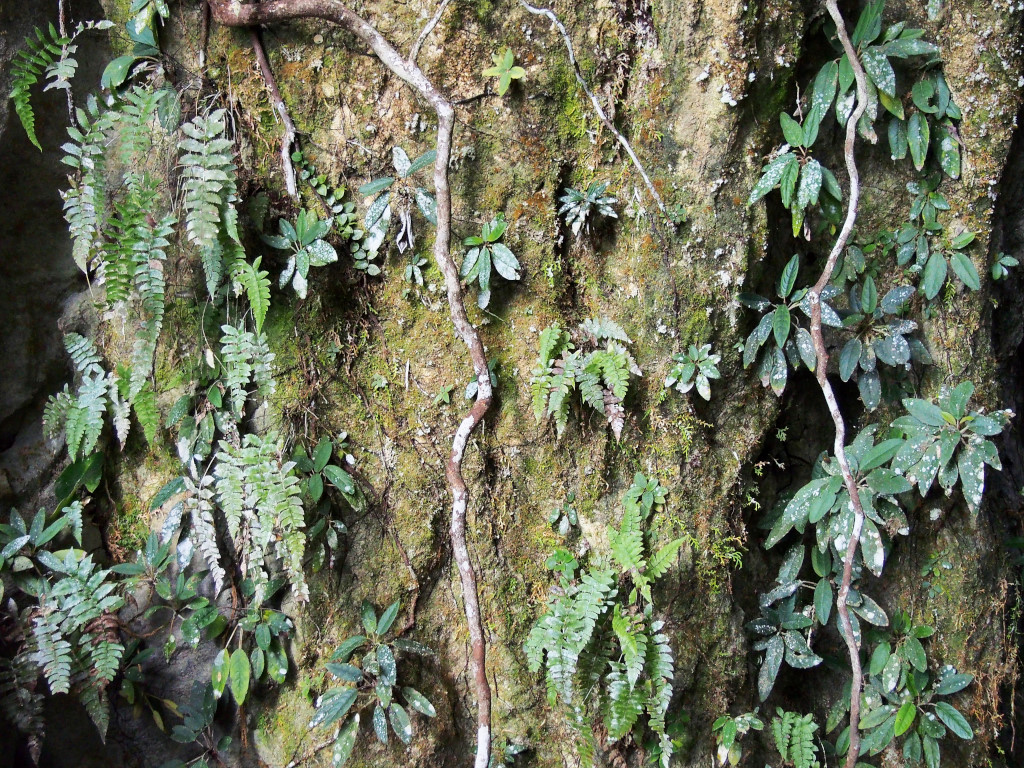
A beautiful pool awaits us outside, but Frank is lamentably the only swimmer. In retrospect, it seems hard to believe I didn’t go into the water, but perhaps it’s the recognition that it would have made no difference, given that the moment you are out of the refreshing water, you become drenched in sweat again.

The guide signals his intended departure with a degree of profuse emotion befitting the end of some intimate relationship, although strangely enough, he will still be accompanying us the distance out of the cave, towards the small amphitheater from which we are meant to watch the bats flying out of caves in group formation.
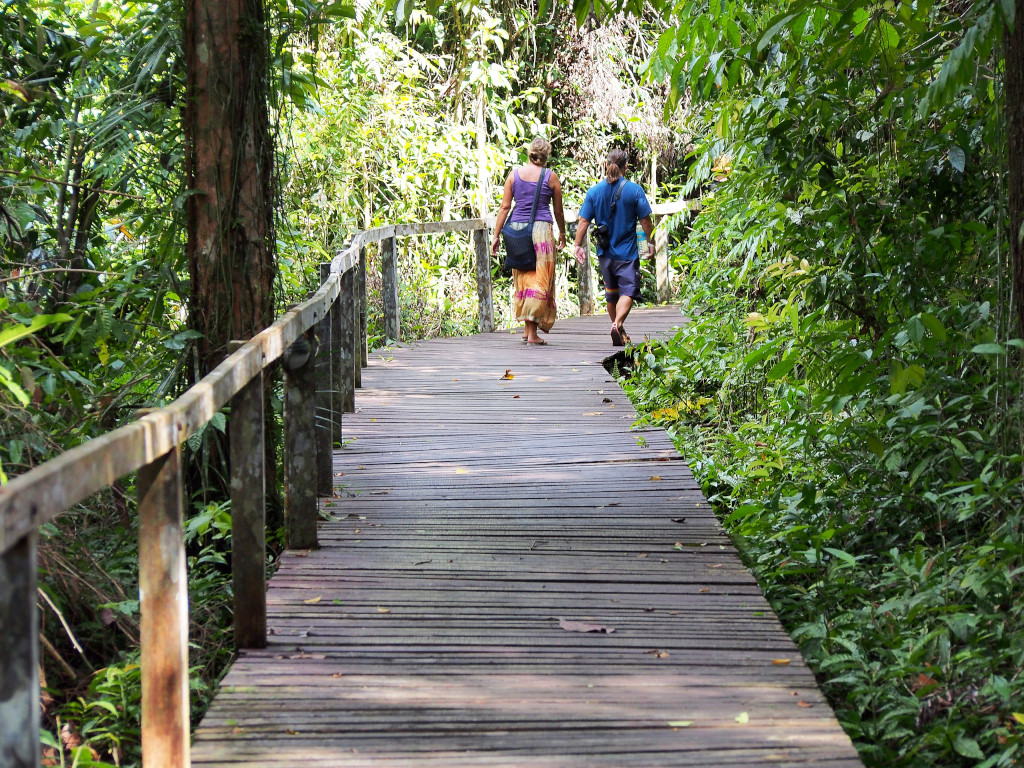
We take a welcome lunch break, and then a different group of people assembles at the park headquarters for the long walk to the Deer and Lang caves, famous for the bat colonies that emerge suddenly late in the afternoon.
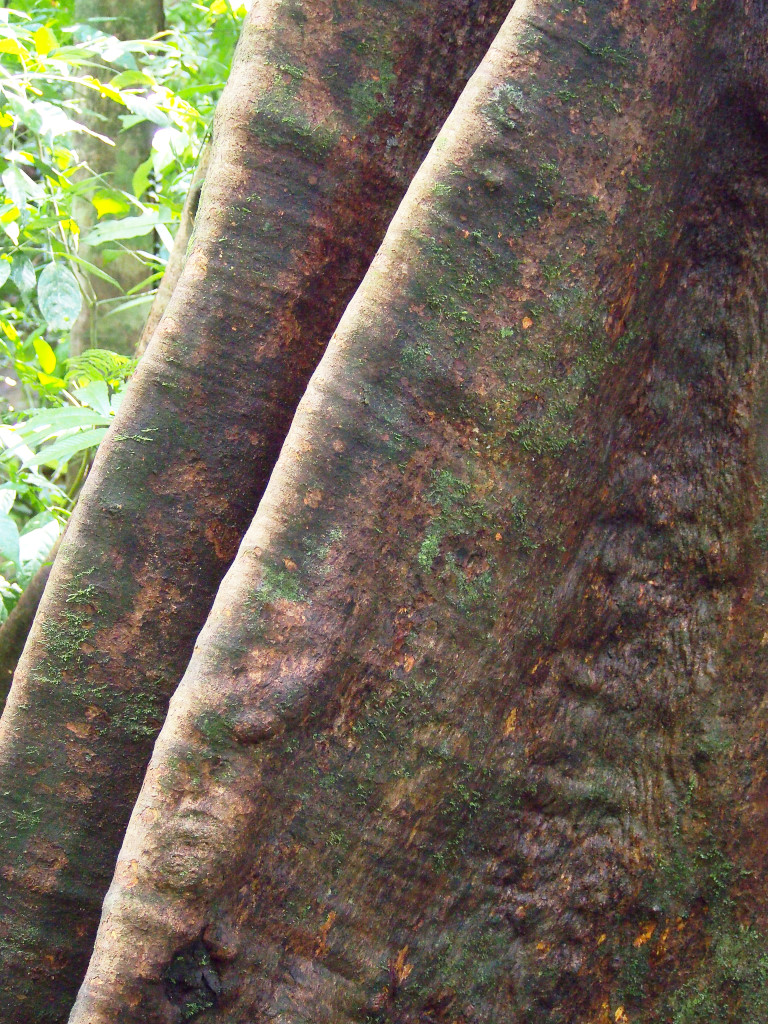
More vistas of the fecund tropical vegetation unfold along the lines of what I saw yesterday from the boardwalk, although the light is better. Around us appear vines, trees with buttress roots, ferns, delicate red flowers, orchids, and in the breaks of the forest canopy green giants that soar overhead.
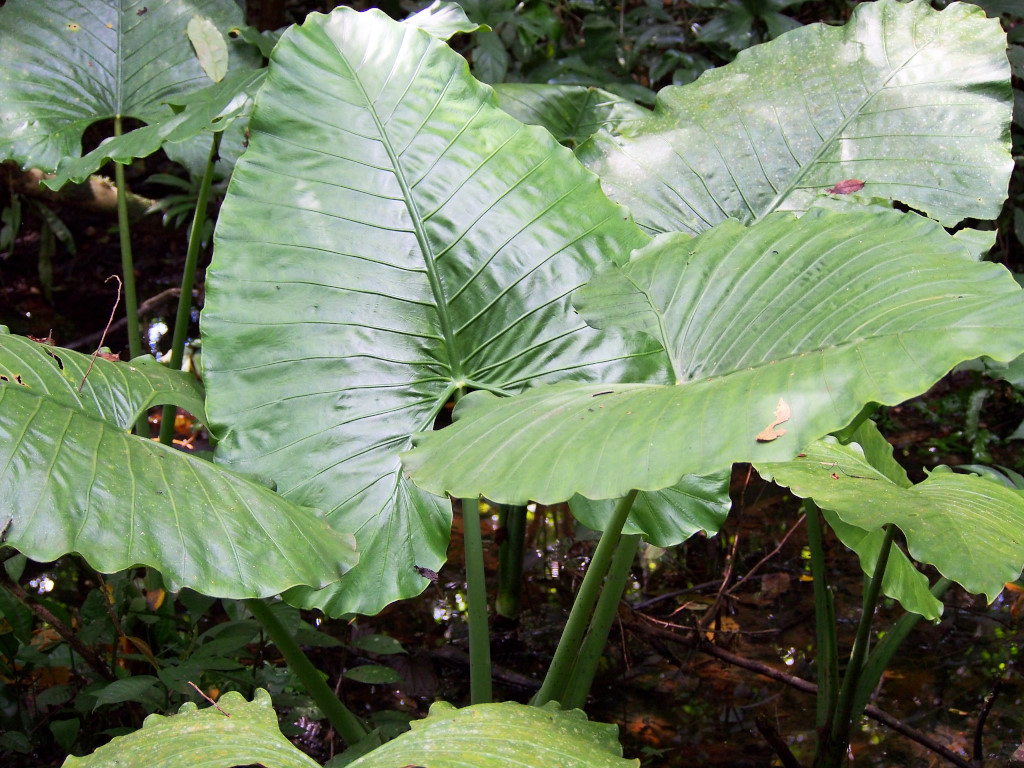
The walk to the caves is lengthy, some 3.8 km. The towering cliffs that conceal our destination come into view above us. And again we are thrust into the mysterious subterranean world, surreal rock formations cascading from the undulating shadows above us, stalactites crusted in urchin-like rosettes, rows of stone udders, wart-studded erections protruding from the rock ledges above.
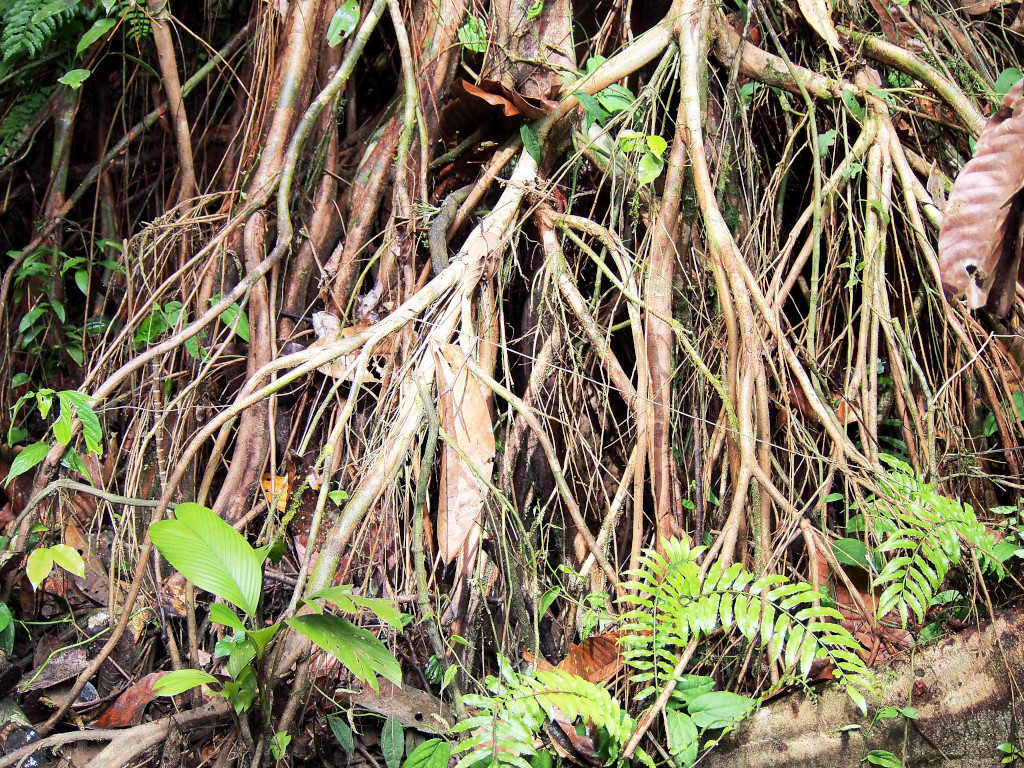
Deer Cave is massive, over 2 kilometers in length, and never less than 90 metres high and wide. The main chamber is 174 meters wide and 122 meters high. The intense smell of the bat guano is ever-present. Tendrils of melting rock flow across the rock wall, and strange coral-like formations erupt from the ceiling. Stalactites appear that seem to be melting, as if seen through some distorted lens. As always, the play of light and shadow has a powerful effect on the visitor.
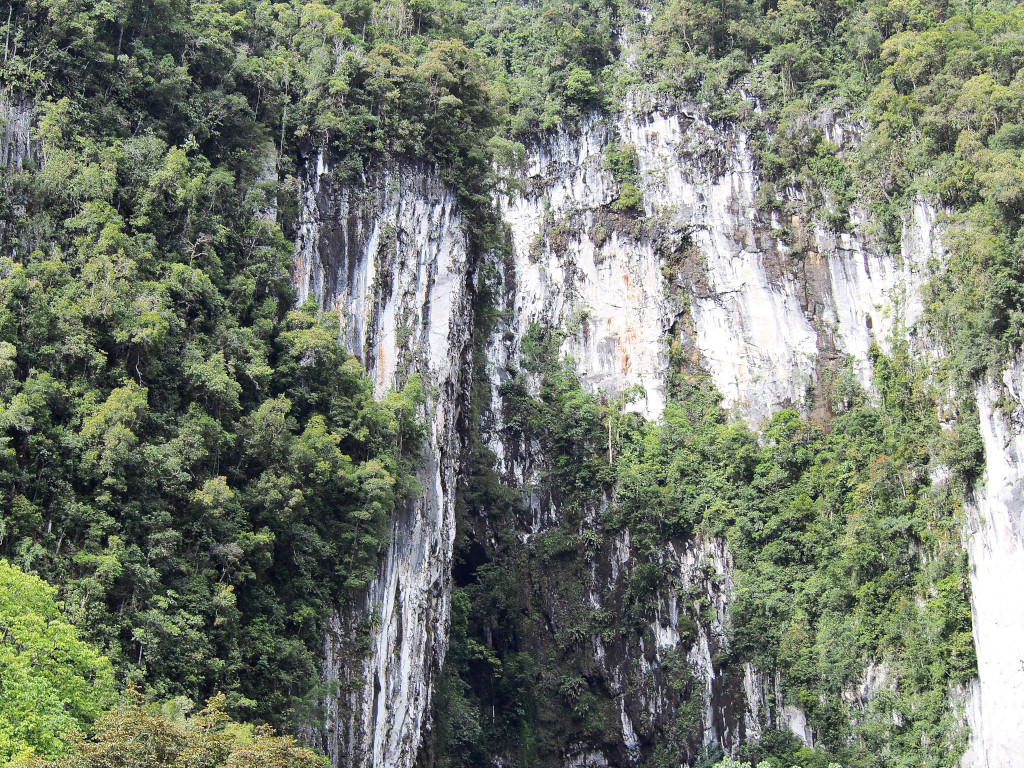
Significantly more bats are apparent in this cave, their virtually indiscernible shapes hurling by in the darkness. This cave system is of course famous for its bat population. A colony of 3 million Wrinkle Lipped bats live in the caves, and erupt is a succession of waves at dusk that momentarily blanket the sky in darkness.
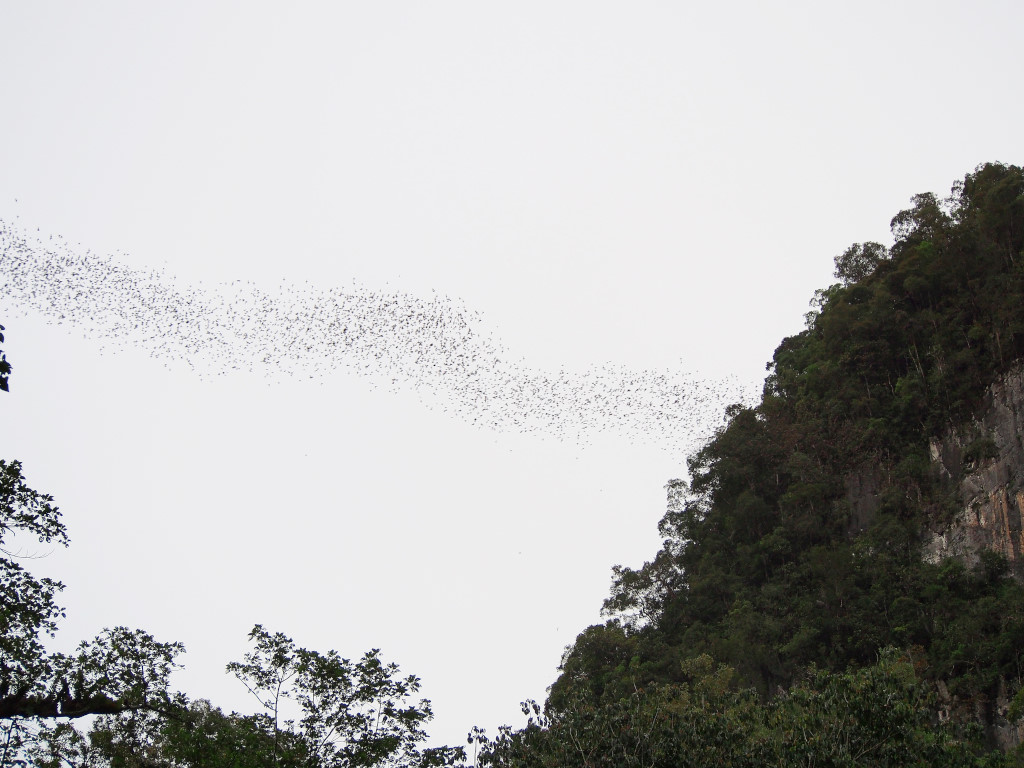
At the entrance again, we pass the exotic tree ferns back into the Lang cave, much smaller, but dramatic in its way. We weave around cascades of water showering from high above, filtered through the shafts of light probing into the depths of the darkness, a curtain of water separating this Hades from the terrestrial world.
On our penultimate migration of the day, we trudge exhausted to the gathering area not far from the caves we have just visited. The opportunity to buy a cold drink in this small staging area has an almost revelatory quality, given the relentless heat and humidity.
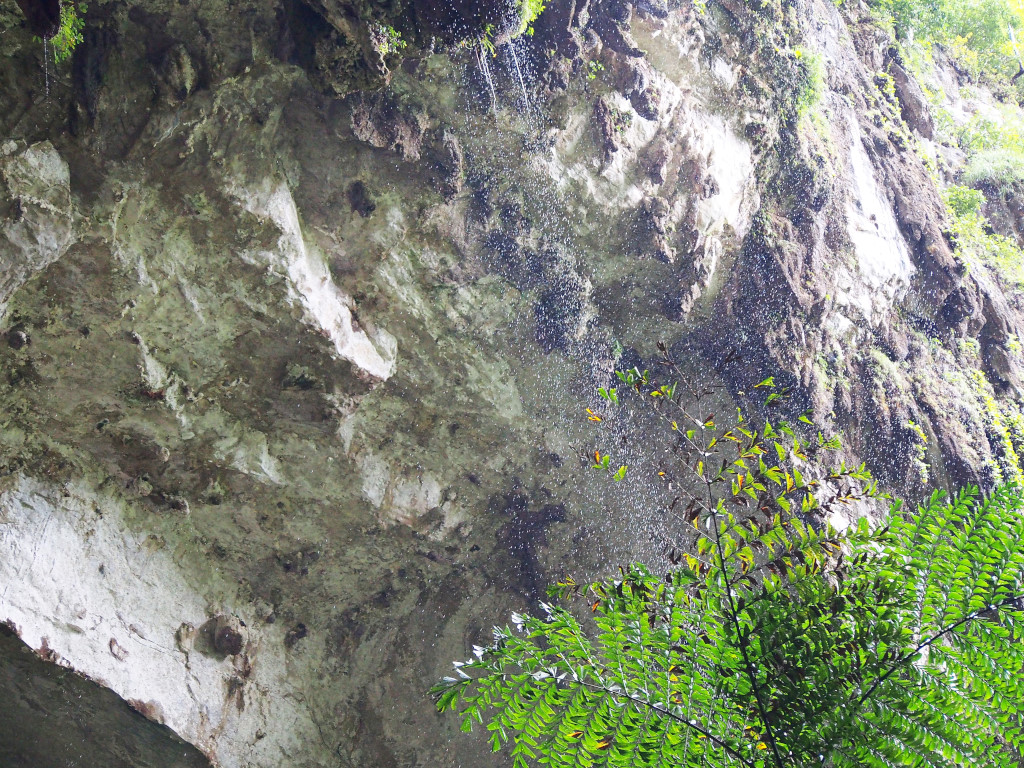
I speak with our guide at length about the realities of his country. At first, he listens politely, but then becomes more engrossed and attentive, politics and the politics of identity being a very delicate matter in the country, the local orang asli descendants of Sarawak having their own particular problems.

We are seated on a wooden platform which features a succession of staggered rows for optimal viewing. We sit, relax, and wait, our eyes increasingly focusing on the same spot in the sky.
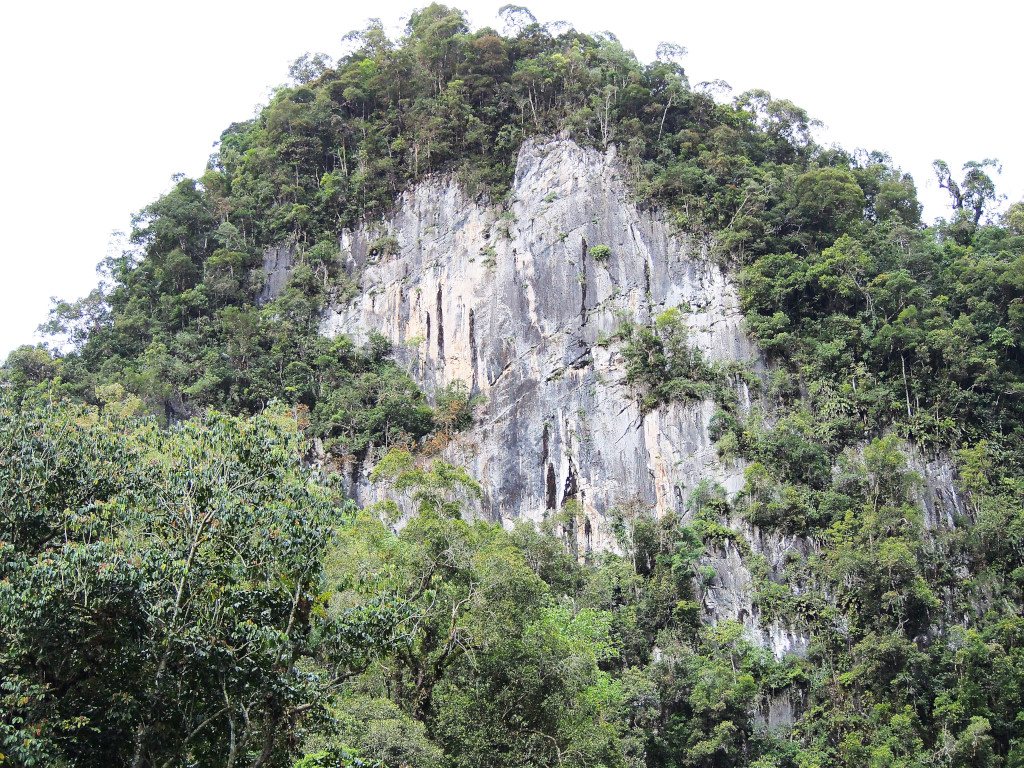
I turn my attentions to an elderly Singaporean, who voices the views of his citizenry in the continued discourse on the region, and finally, when I sit down in the amphitheatrical setting, I engage the couple from Kuching here to provide the office staff with support for their accounting software. They are very happy to have been able to make it to the bat caves for the evening departure session, given that they have been so busy in the office with work.

We wait, and wait, but nothing. The hues on the foliage-drenched cliff face above us deepen as the later afternoon light diminishes, just as one of the Malay guides strides purposefully amongst us, telling us the time has come. One persons asks ‘How do you know?’, to which he responds grinningly, telling us ‘I just know’.
And then, suddenly, it appears, a wave cascades into the sky, jerking, contorting, writhing against the dull gunmetal backdrop. The undulating body is momentarily linear, then crescent-shaped, then inverted, stretching into a sine wave, a coiling snake lunging outward, then vanishing into the sky.
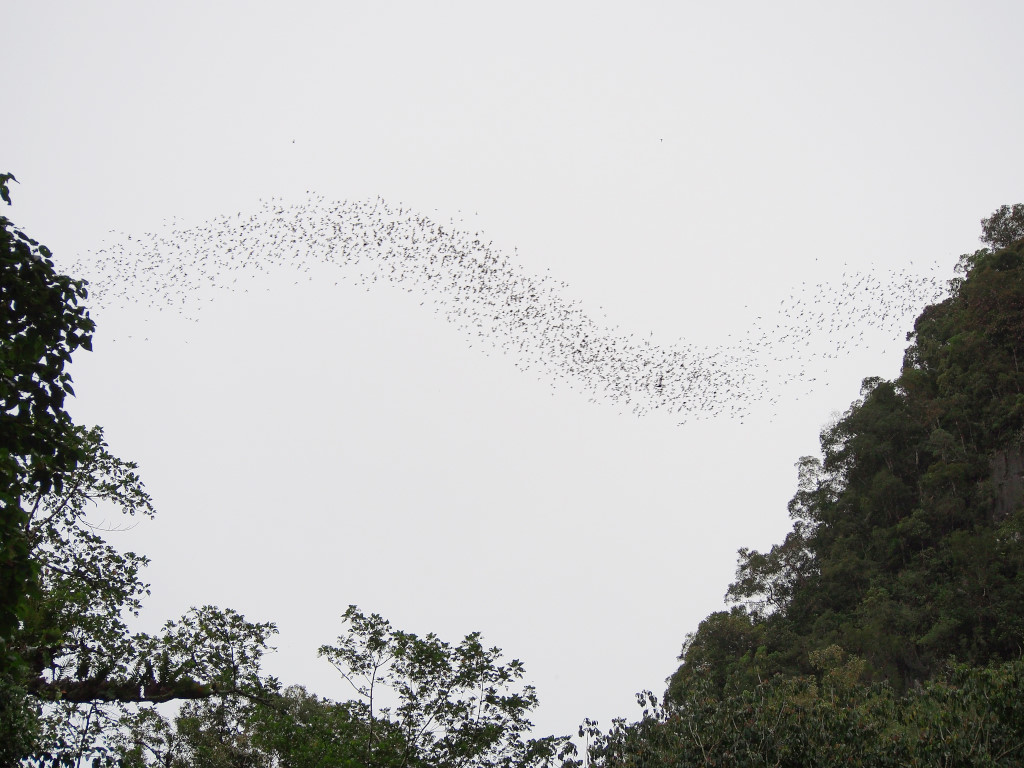
The sky again seems empty, and then another crescendo of innumerable black specks hurtles into the sky, and as before, behaving as a single entity, an unbroken formation, slender, elegant, then flattened, splattered against the grey, then flowing into a coiling organism spinning against the horizon.

They are possibly only hunting where appropriate, attempting to avoid the depredations of the local hawk population. The photos I take are acceptable, but as darkness sets in, things are not about to get any better, and for that matter, the Dear cave may be entirely gutted of bats at this point, so perhaps it is time to return to the park headquarters.
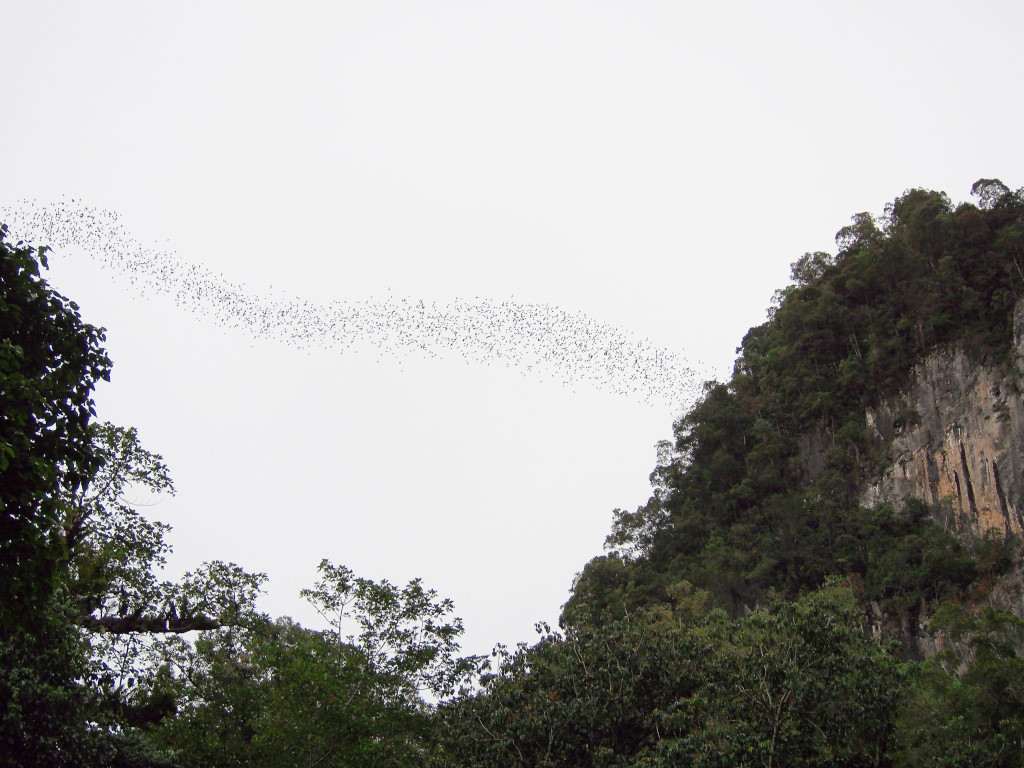
A three kilometre walk is required to return along the darkening boardwalk to the bridge. Shortly into the walk, I turn around, only to see the cliff looming above the forest around me bathed in a golden light, the sunset effecting its predictable poetic transformations, never an opportunity lost to show off the incredible beauty of the area.
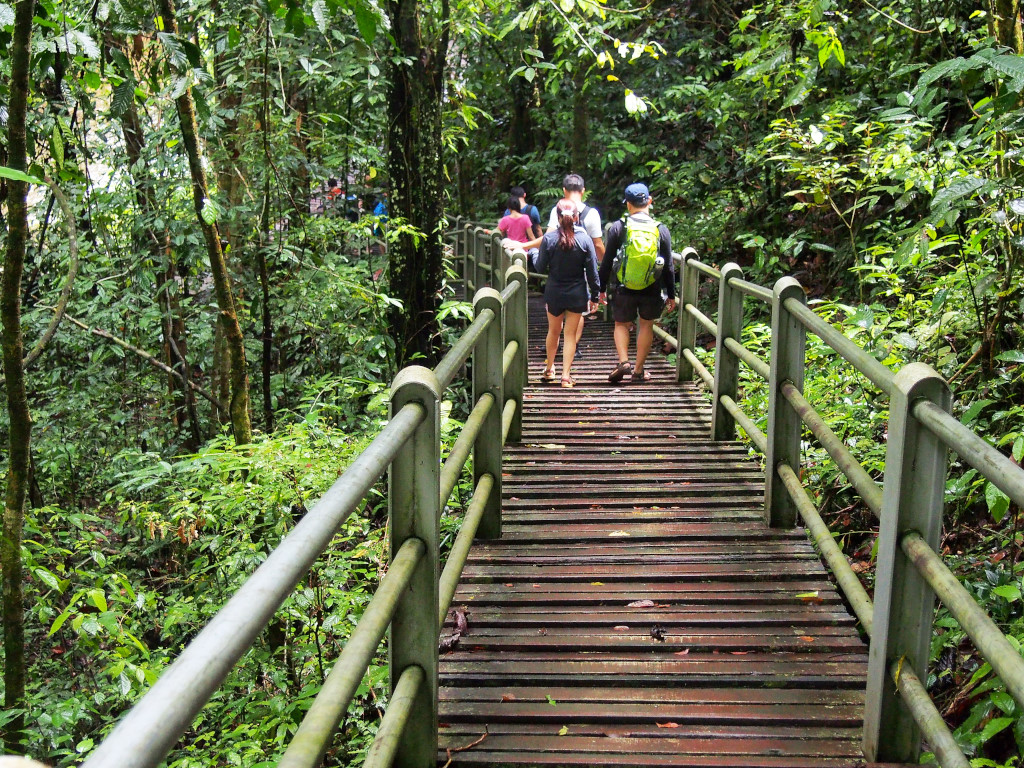
The approaching darkness is enlivened with the dramatic sonorities of birds and amphibians, whose howling and whoops not just vary in intensity but also tone, depending on the direction it is emanating from.
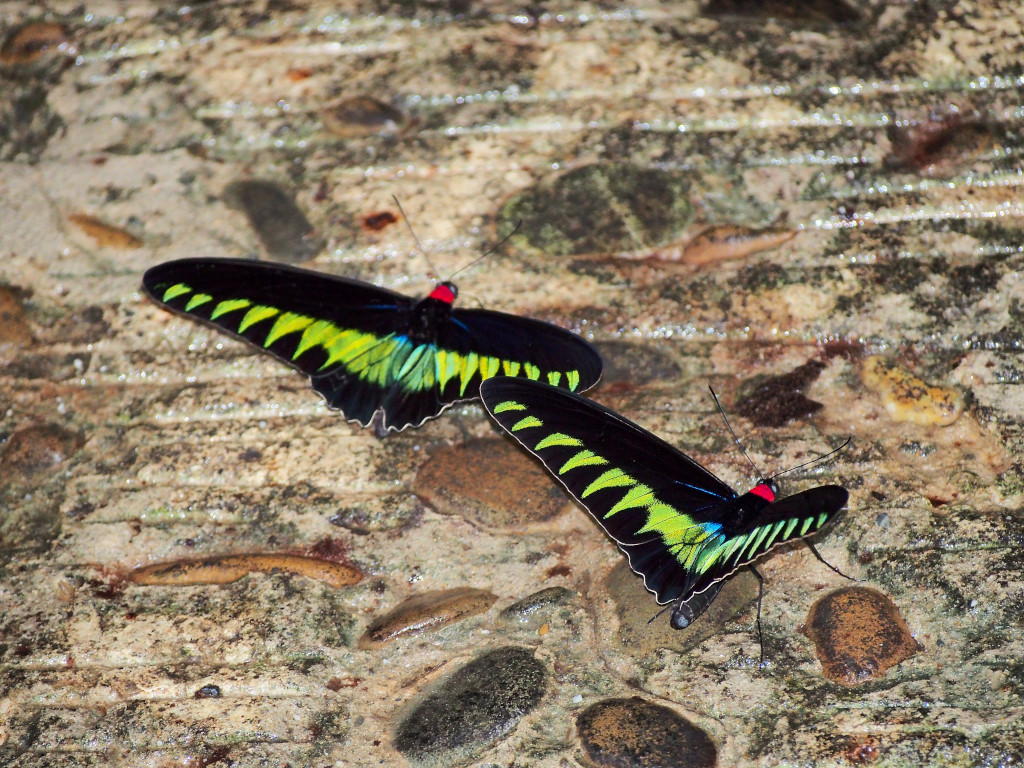
No one is at the Good Life restaurant tonight, not that I expect to be part of any in-crowd hanging out here. Neither Frank, Alison, Jen, the Canadians from North Delta, or anyone else I met yesterday is here.
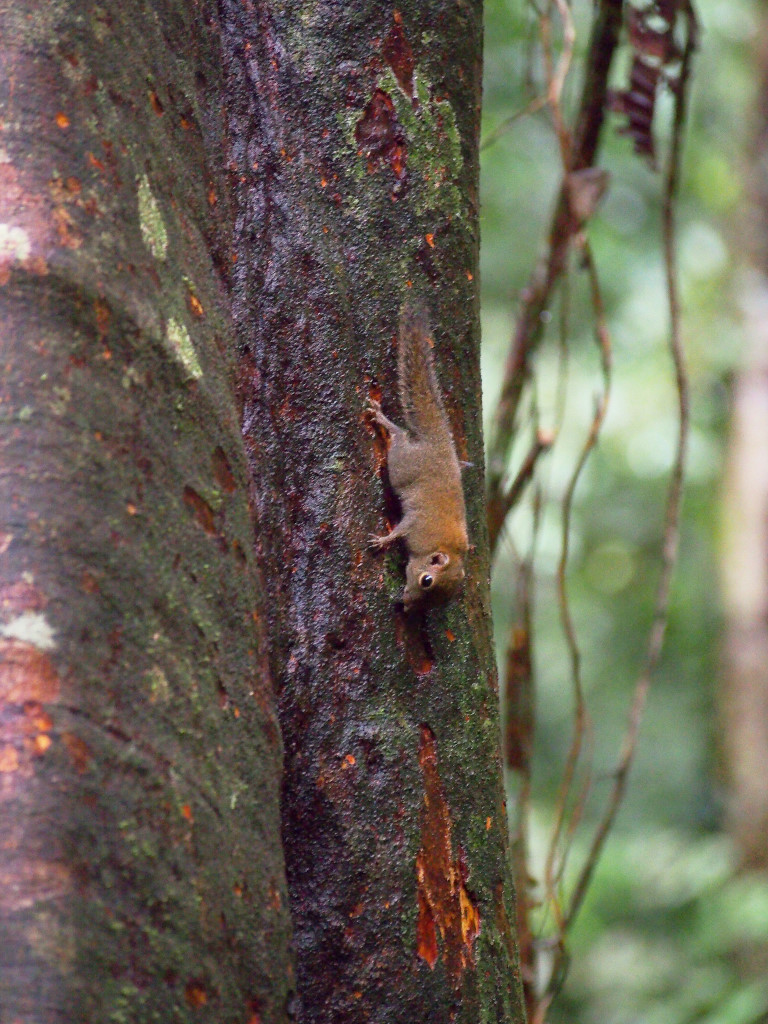
Today the wait for service is abysmally long; by the looks of it, there is only person working behind the counter – and possibly in the kitchen, too. But the food is inexpensive, good, and there is no conceivable competition, other than the overpriced park cafeteria.
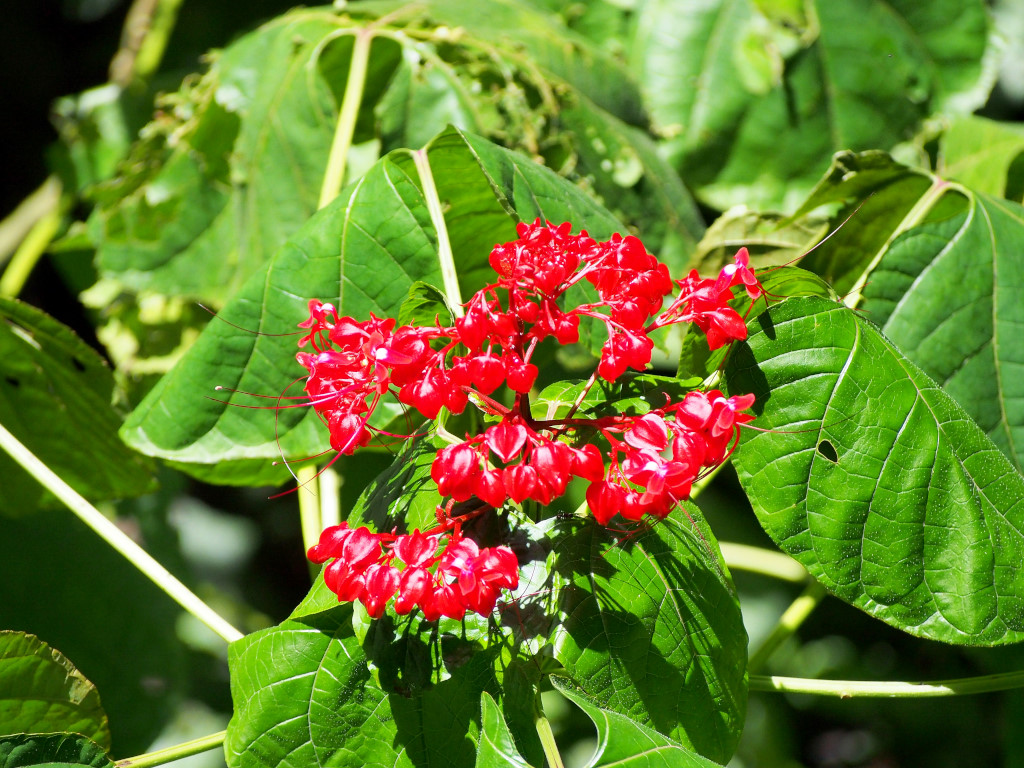
Setting up for the evening in the hostel will be somewhat cumbersome. I have to rethink my strategies for being here, given that I am sharing the space with a Dutch couple. There are some 23 beds in this lengthy hall; they occupy one corner, and I occupy the other.
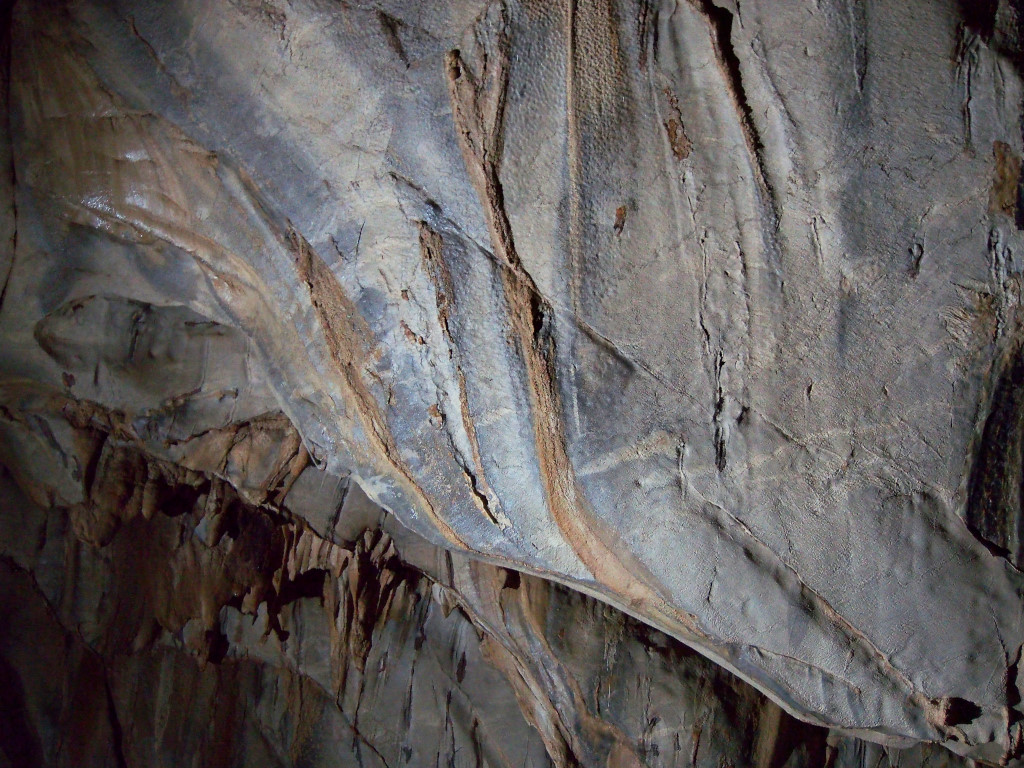
Having to change shirts daily in this tropical heat, I have much more than just a few shirts to wash. I somewhat methodically unpack and lay my belongings out on the bed frame next to my chosen bed, the plastic bag with pants, felt bag with electronic cabling, day pack miscellaneous items, camera now ensconced in a plastic bag with gel packs, contents of my pants pockets, empty plastic bags and cosmetics all in their respective places.

As it turns out, the Mulu Resort hostel may have been a good idea, but this is absolutely the worst time to be staying in a hostel, giving the sweltering heat and humidity, and the fact that I have next to no clean clothing to wear. And I don’t expect the clothes I washed on the line to dry any time soon. I would rather enjoy the luxury of not having to wear anything, rather than sweaty wet garments sticking to my itchy skin.
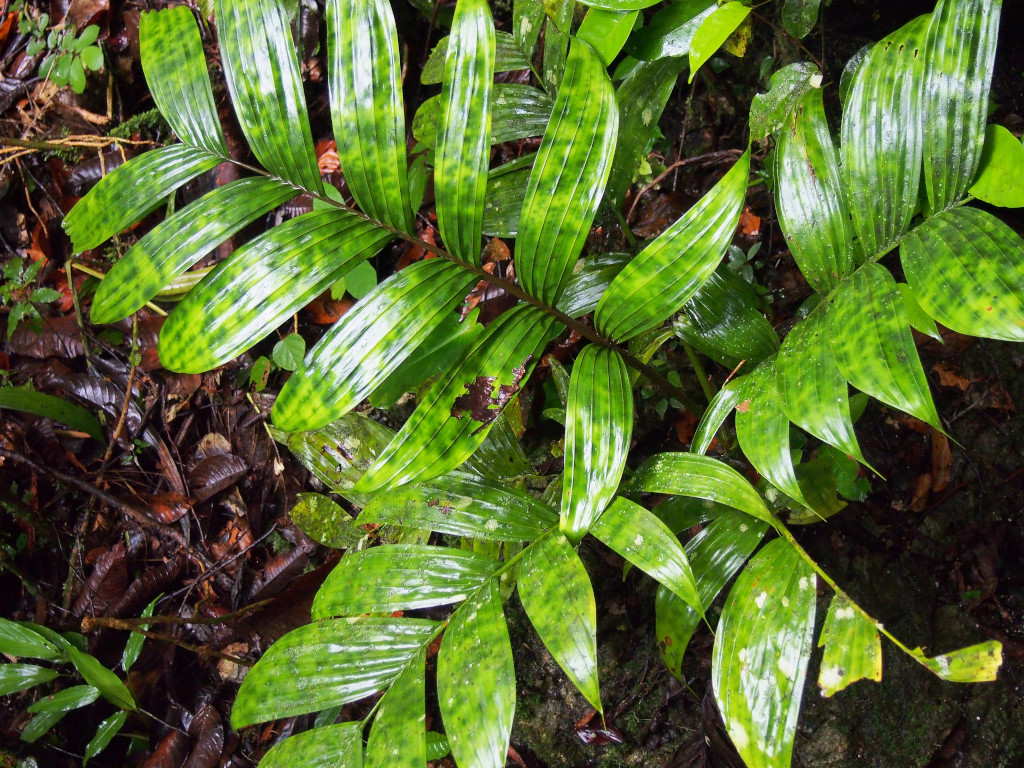
I hope no one will make any unsavory comments at the amount of washing I am hanging up. I realize that the hostel owner didn’t give me a towel, and she apparently left for the canteen. So it looks like I won’t be showering tonight, which is kind of gross …

